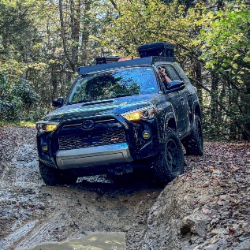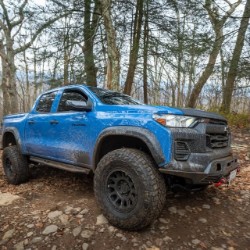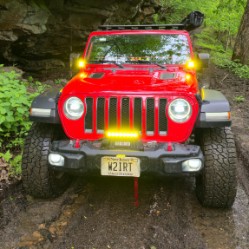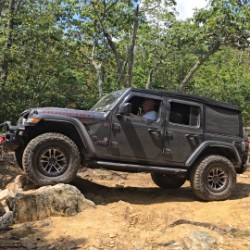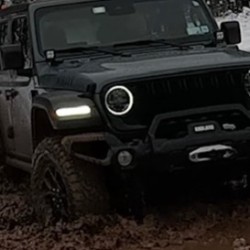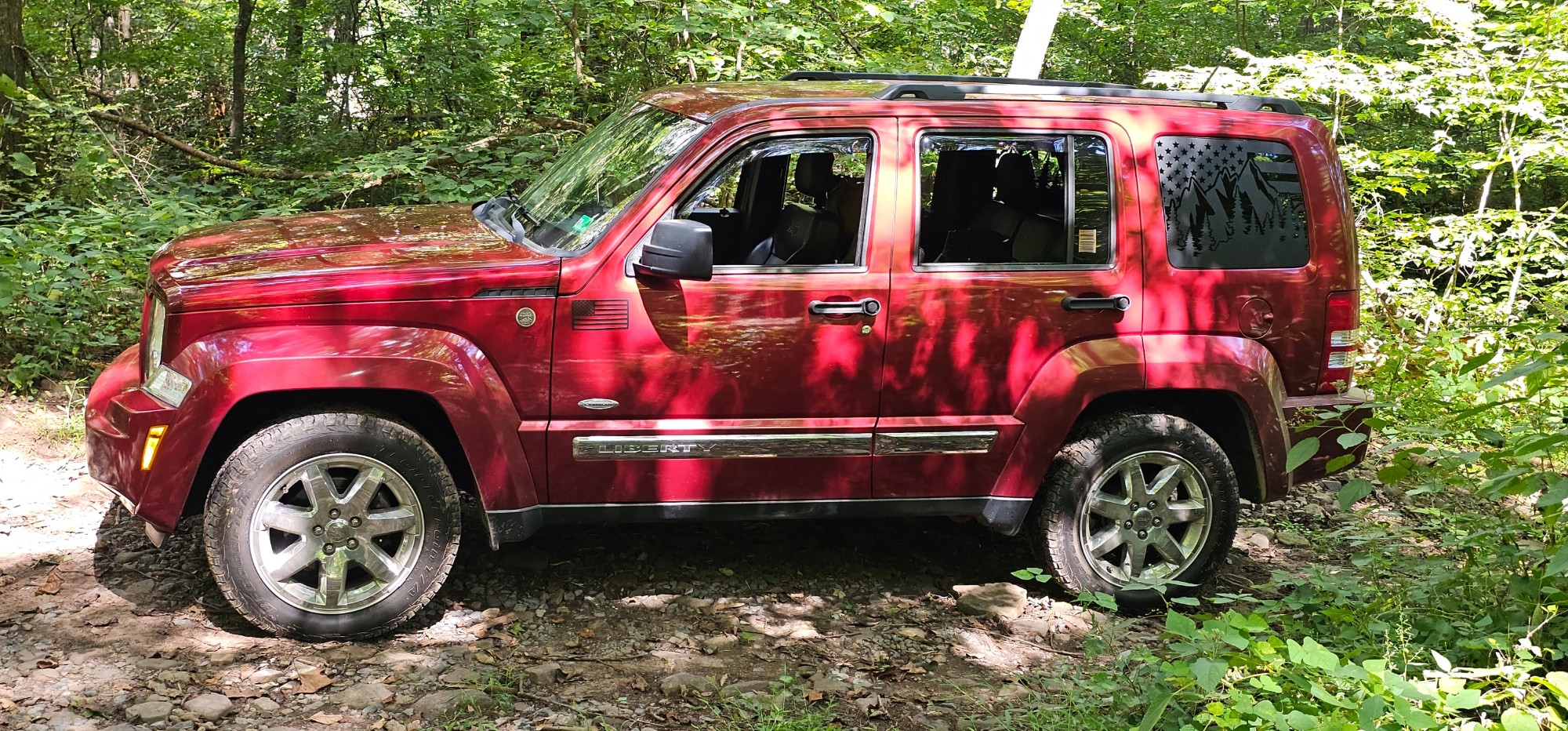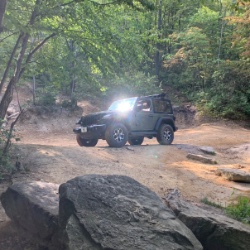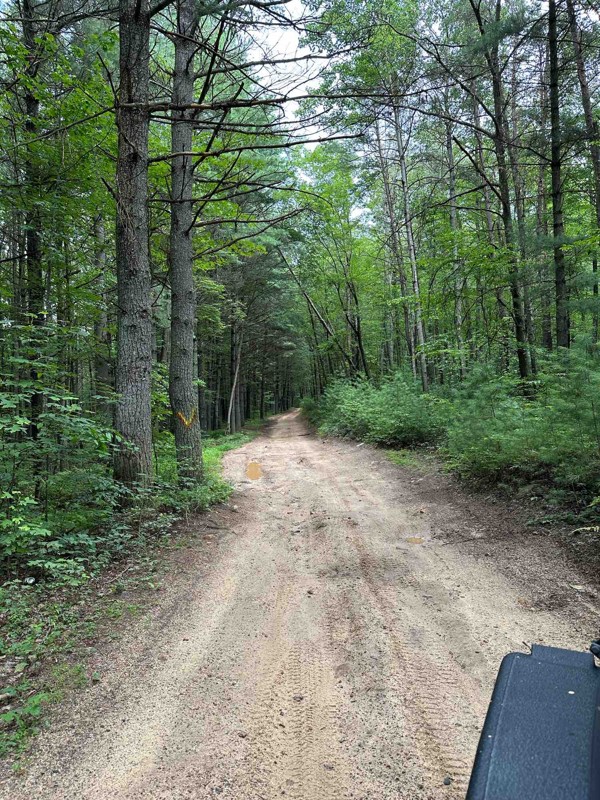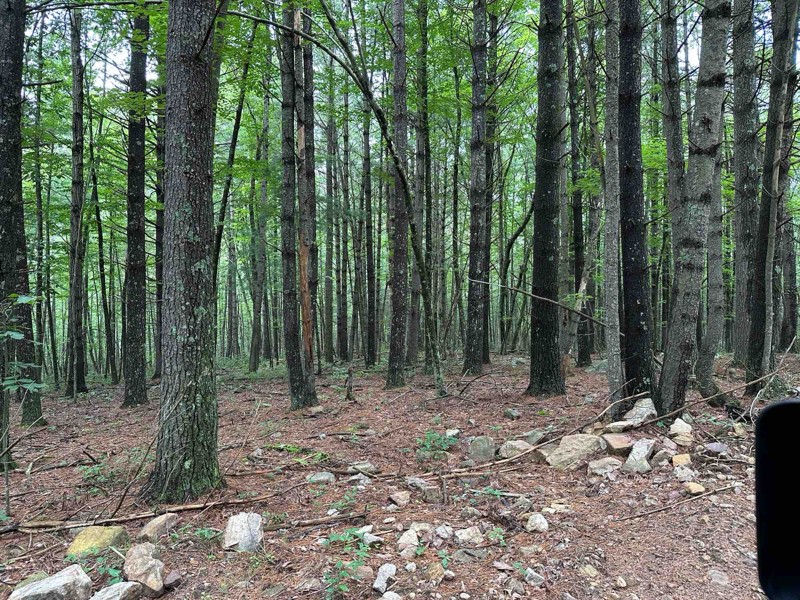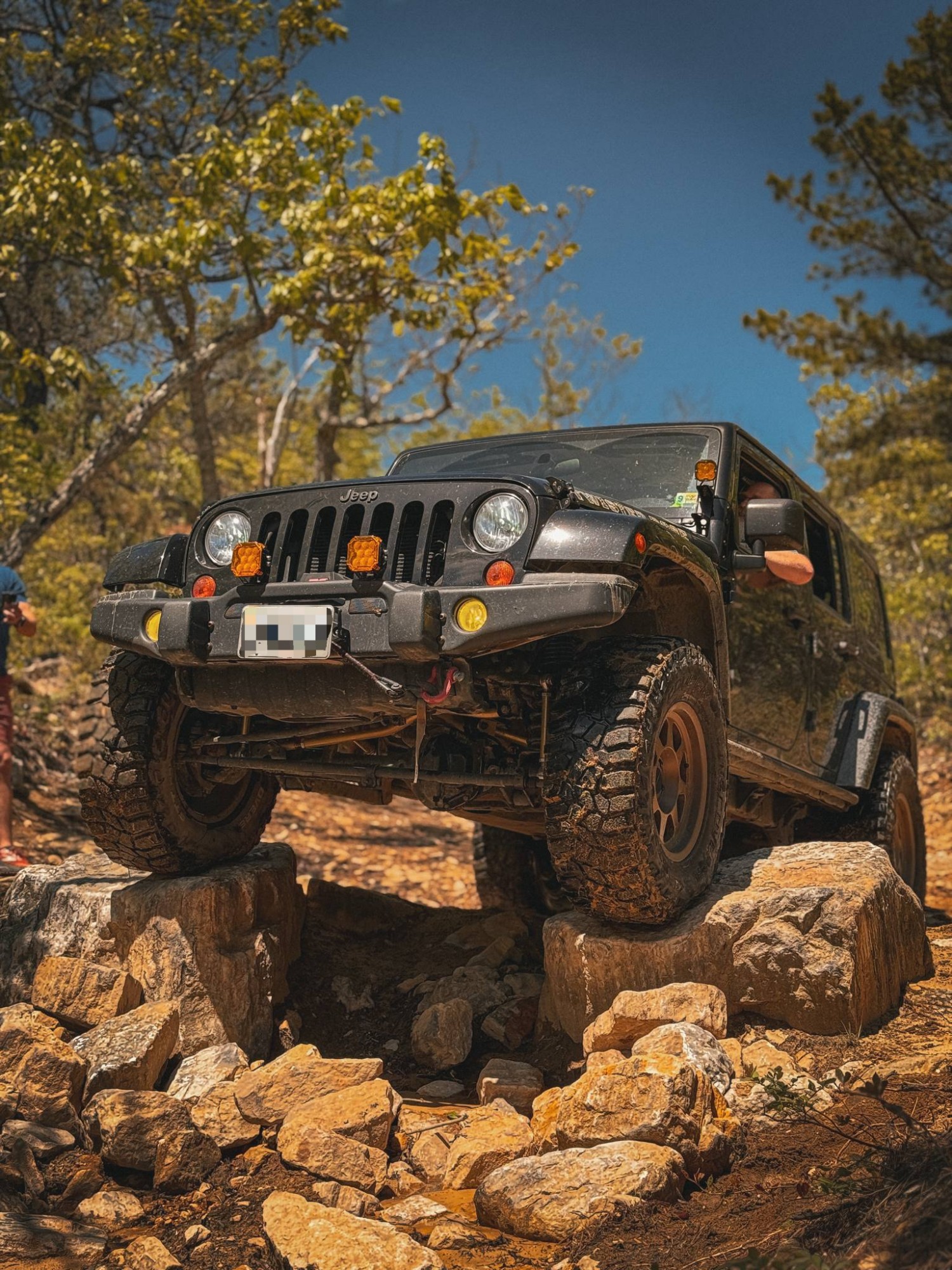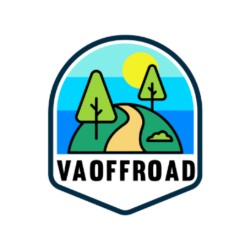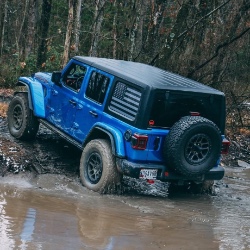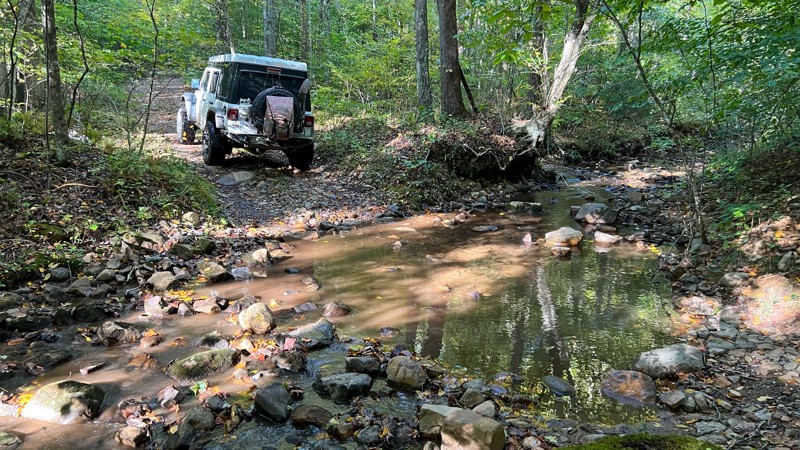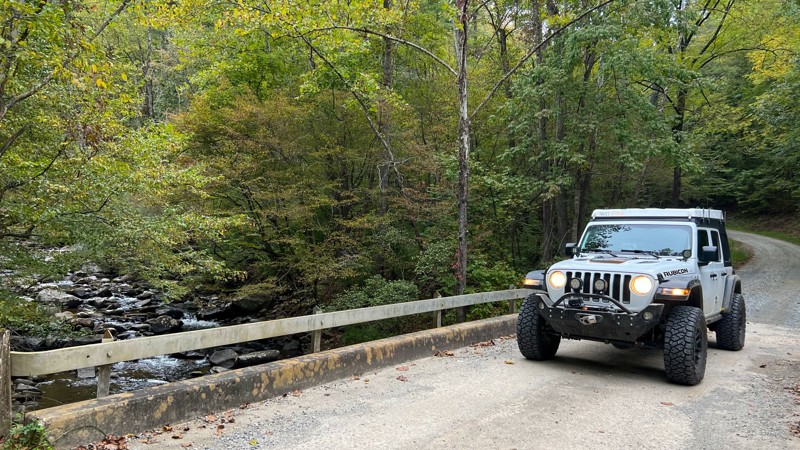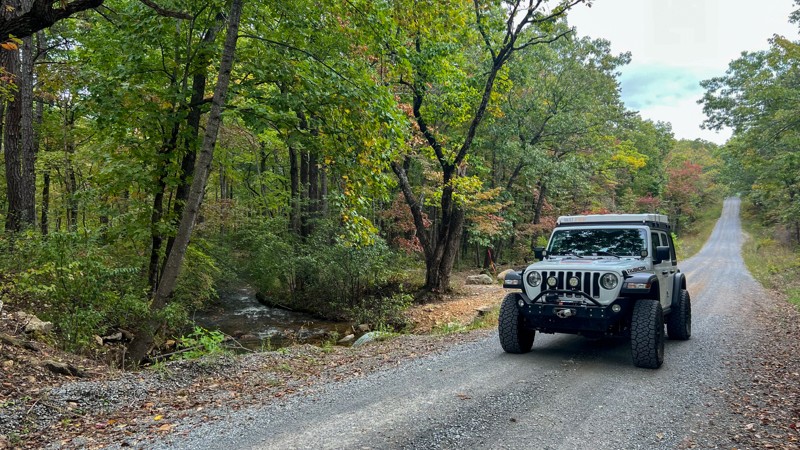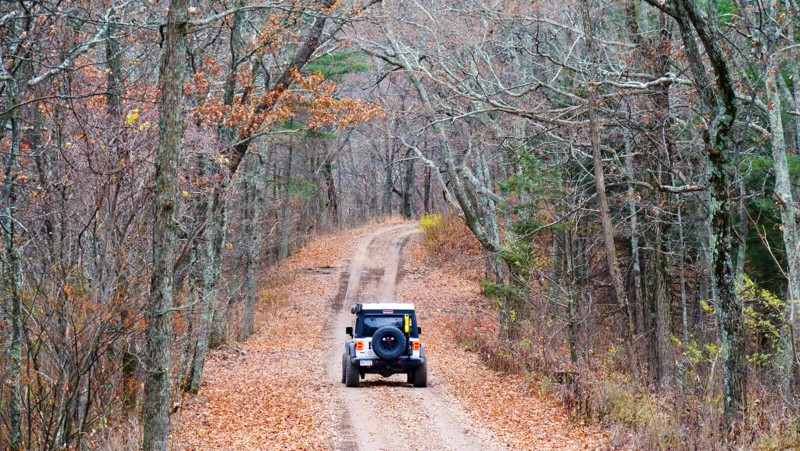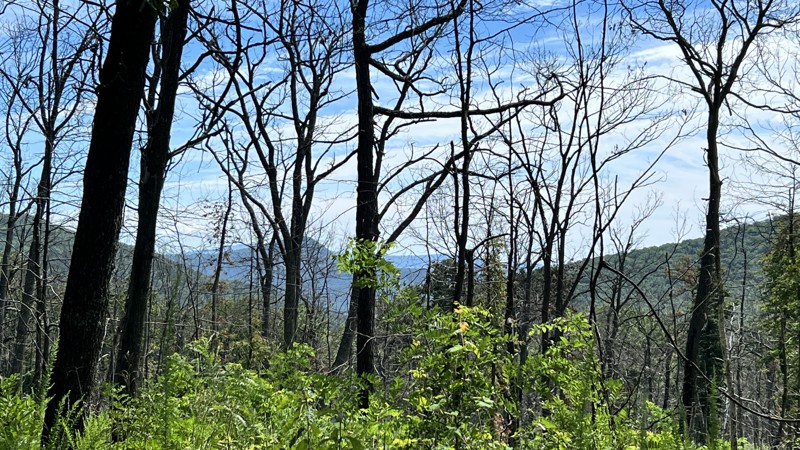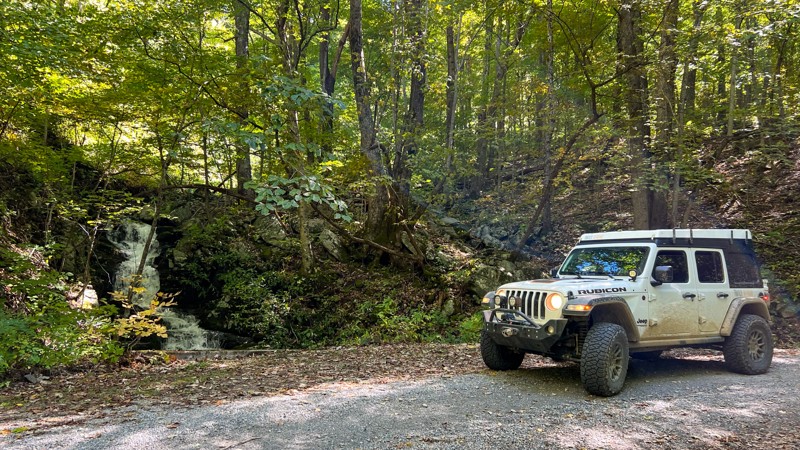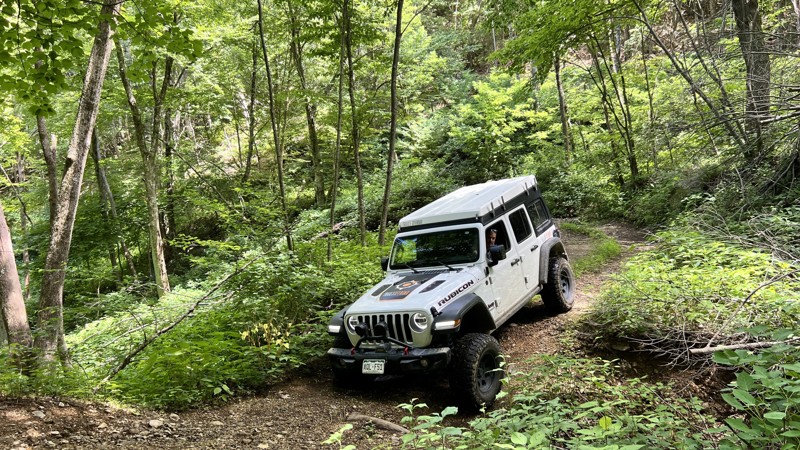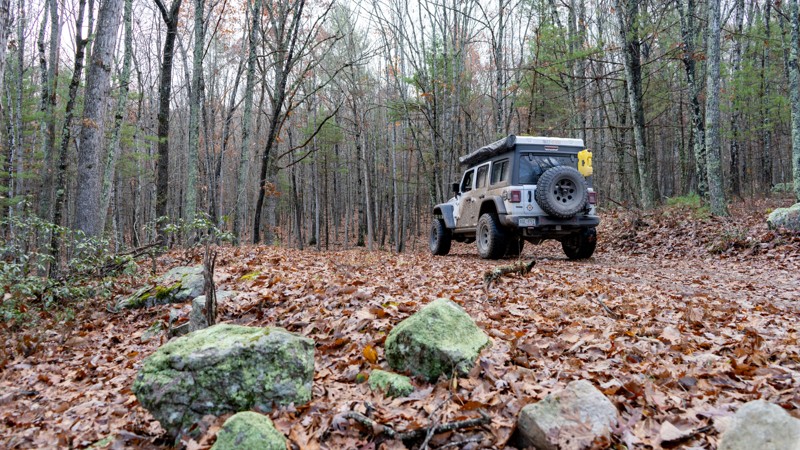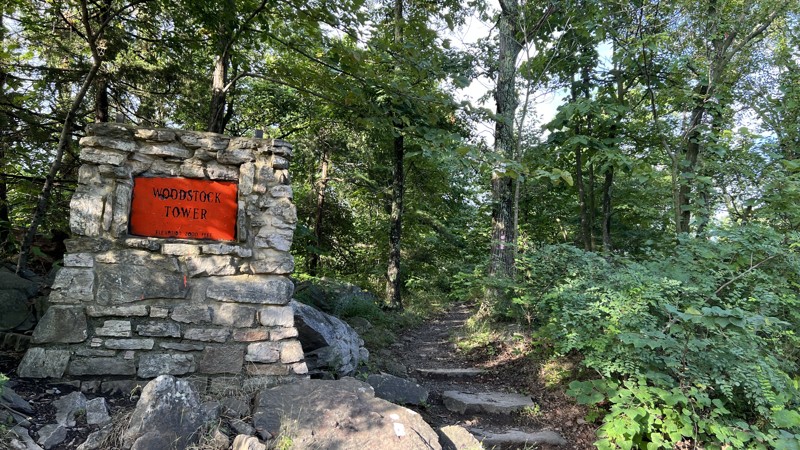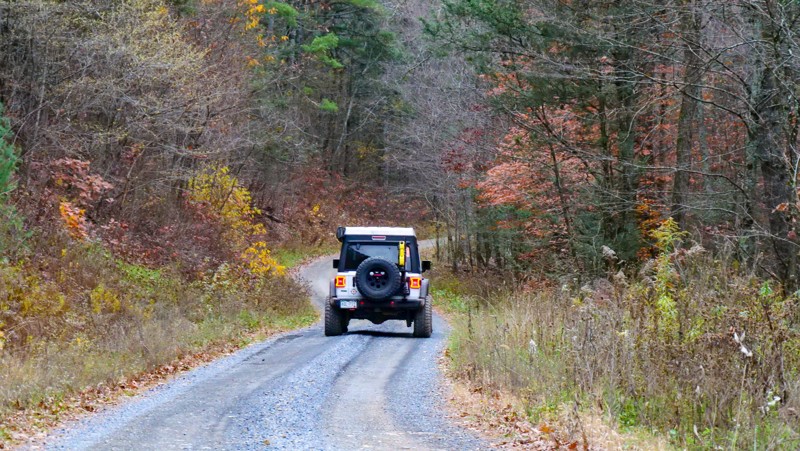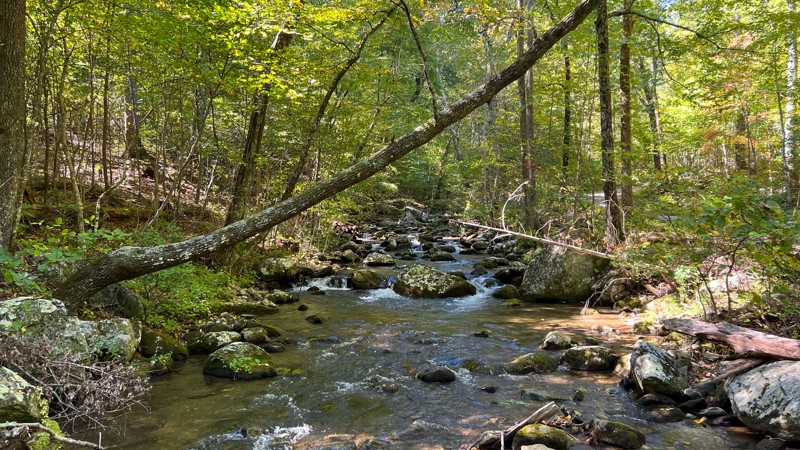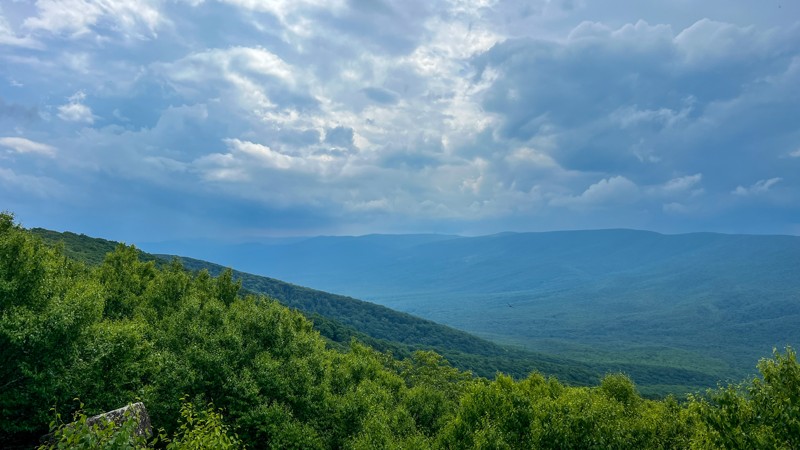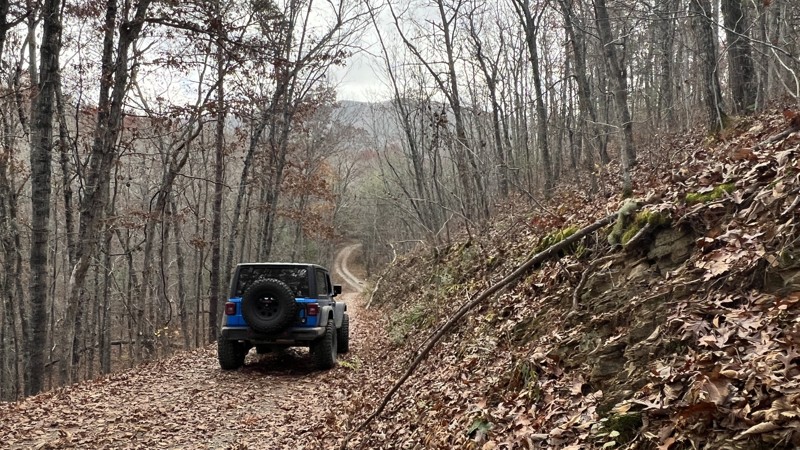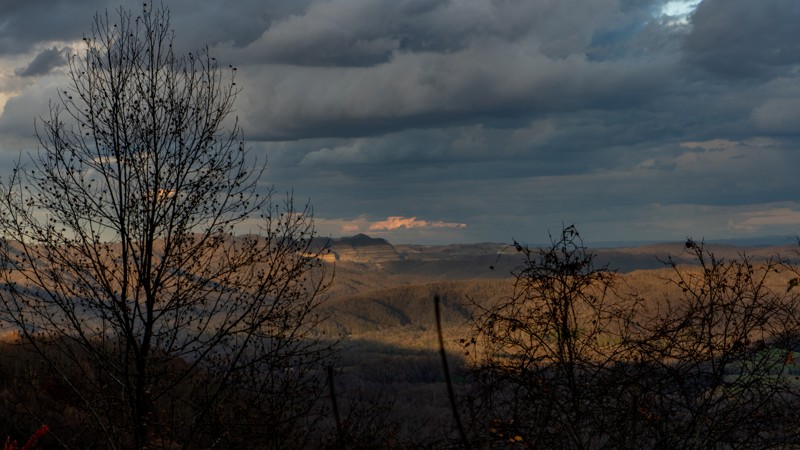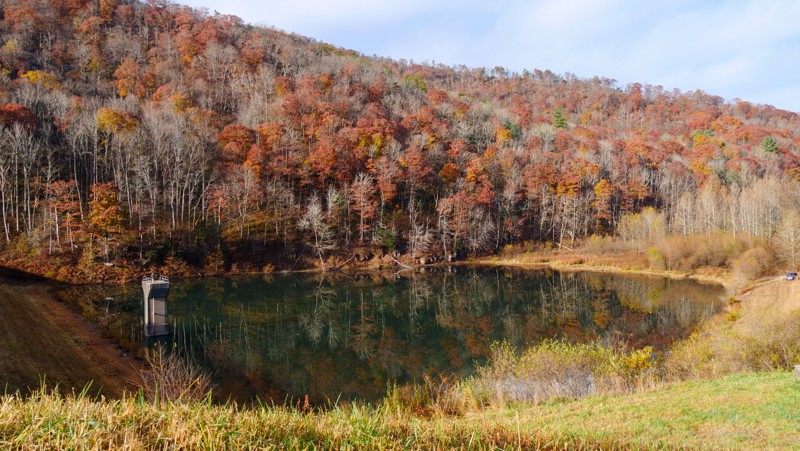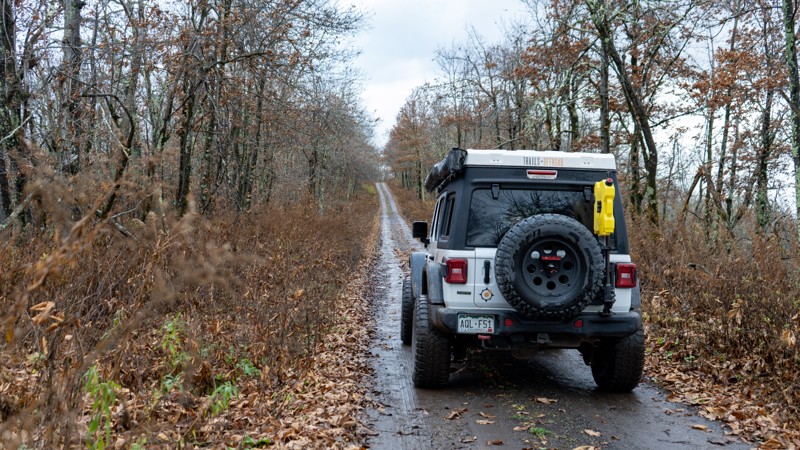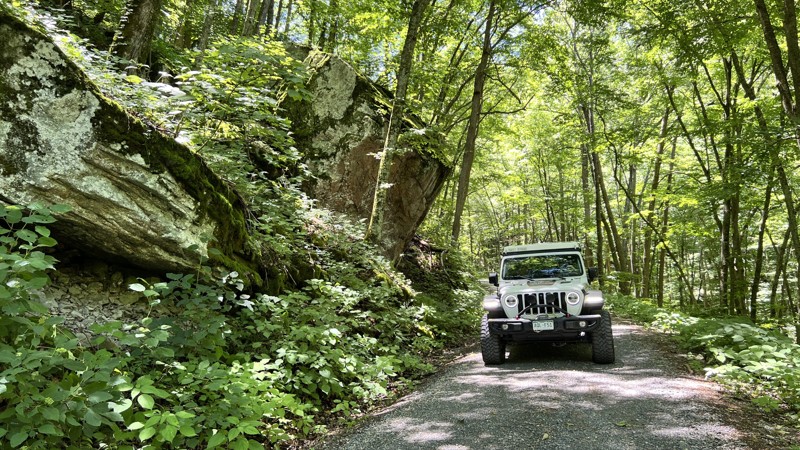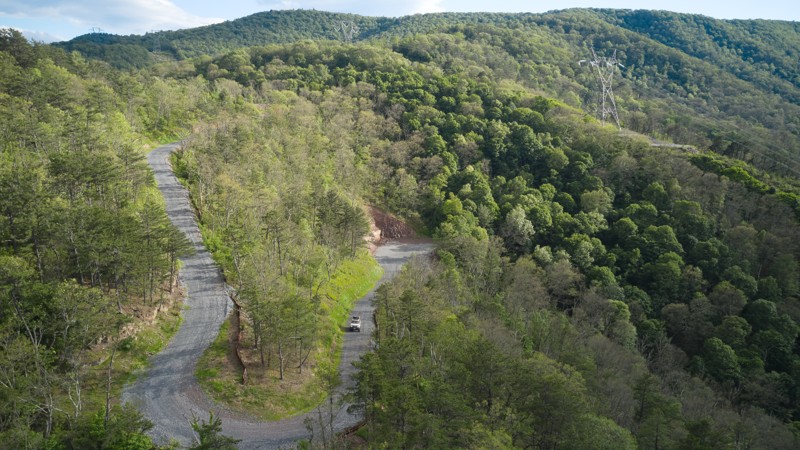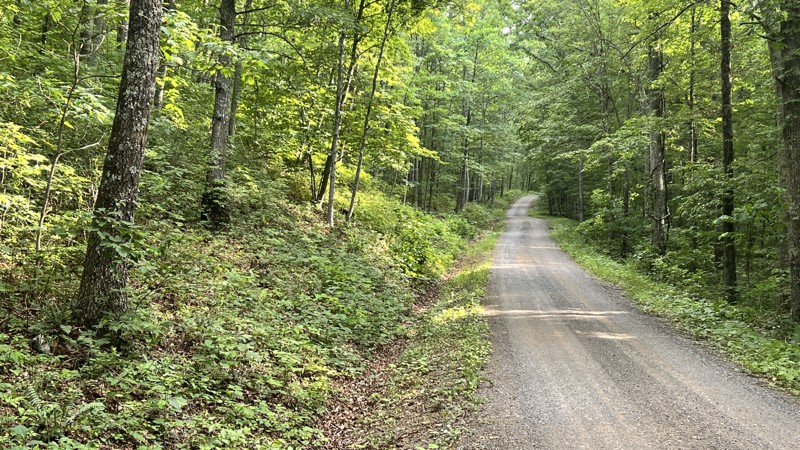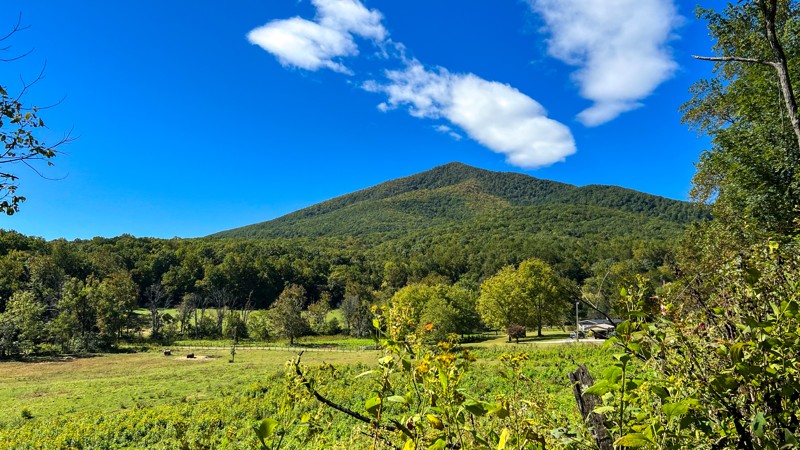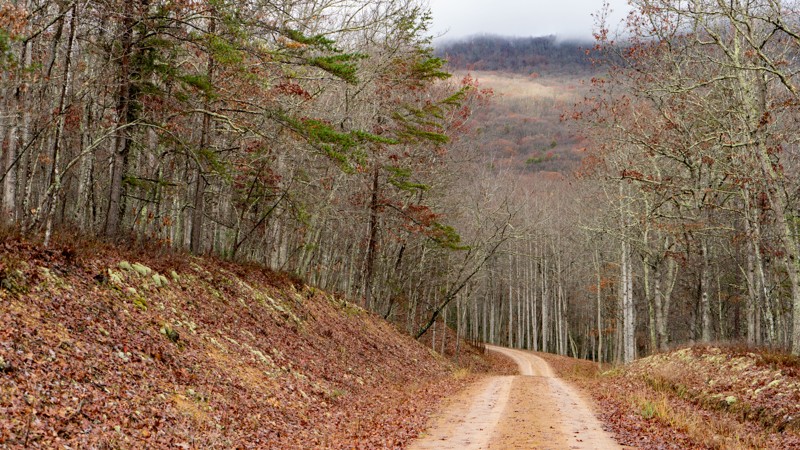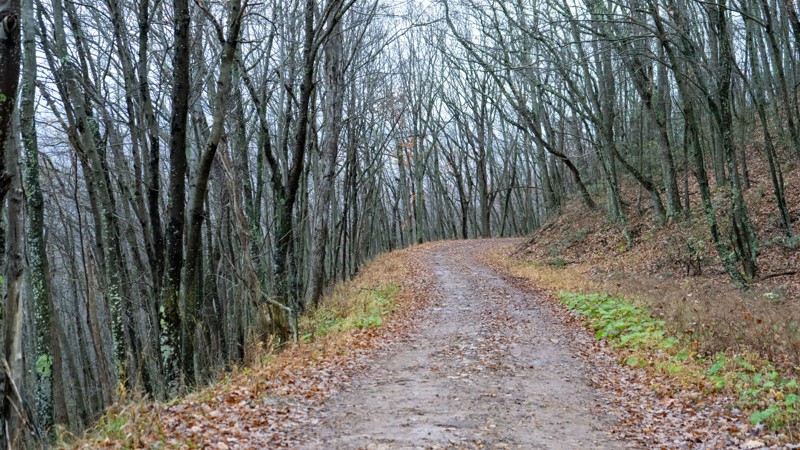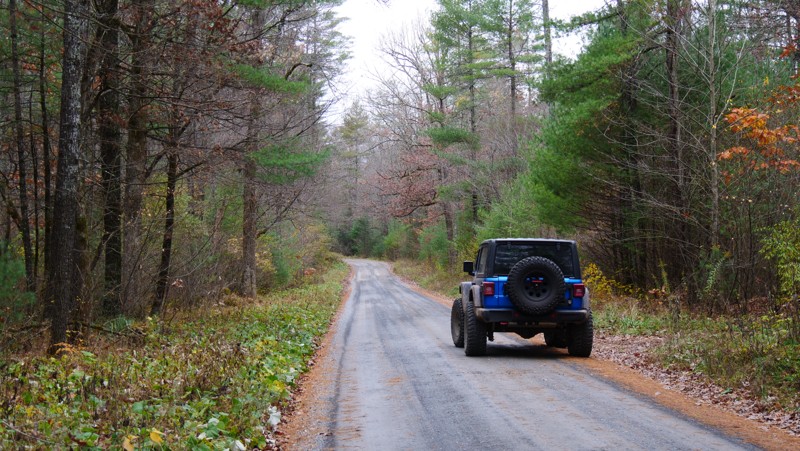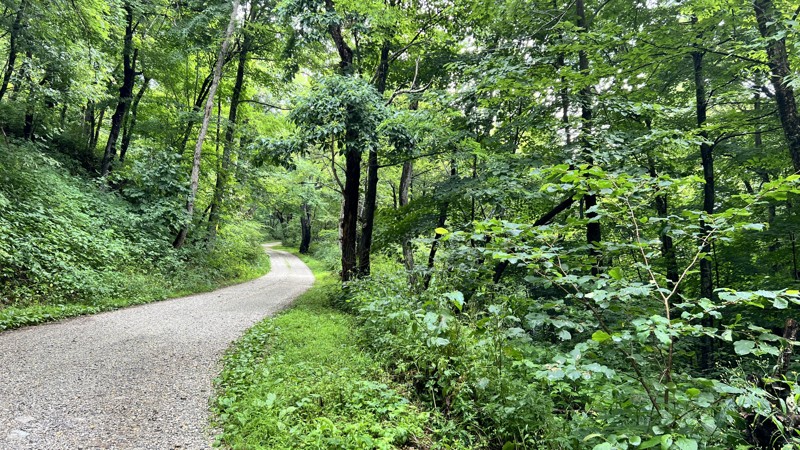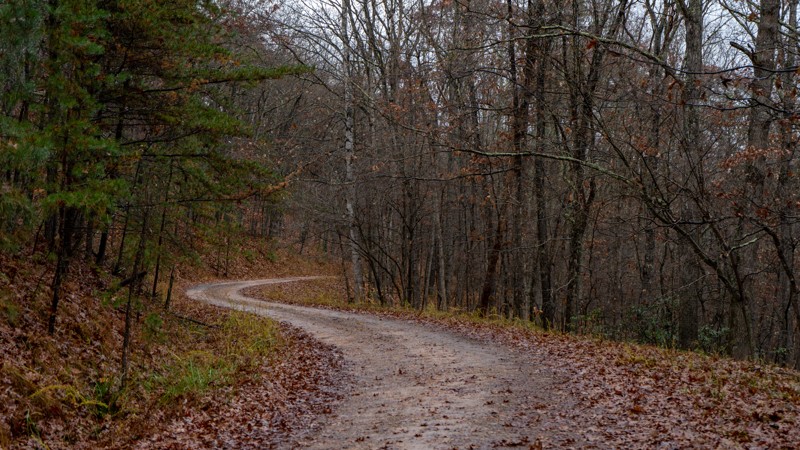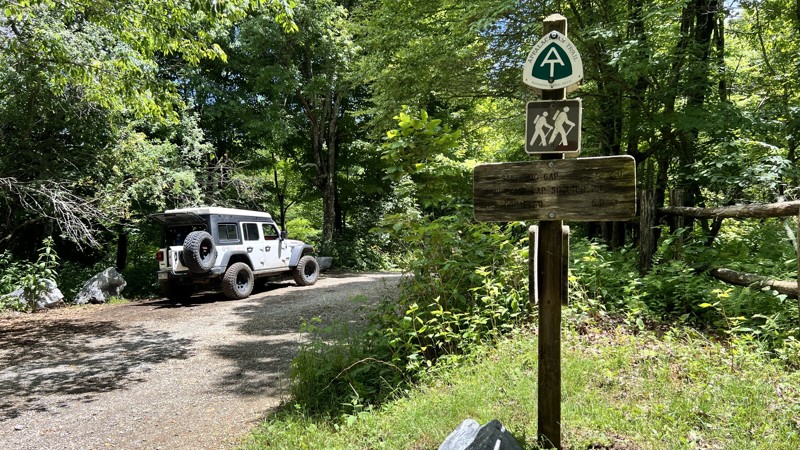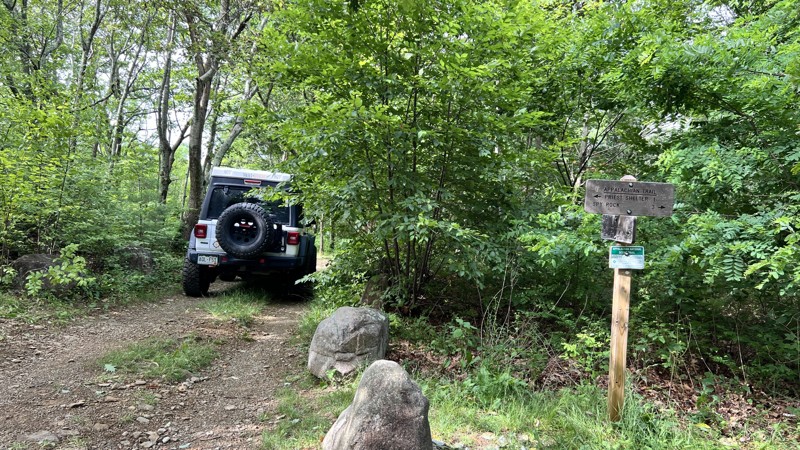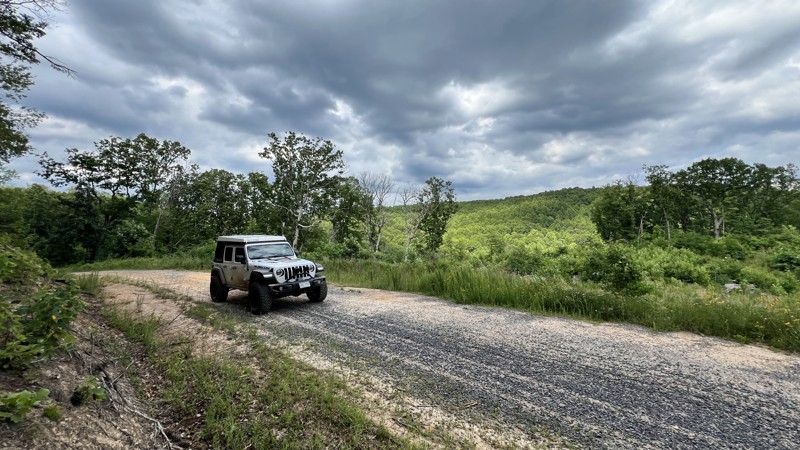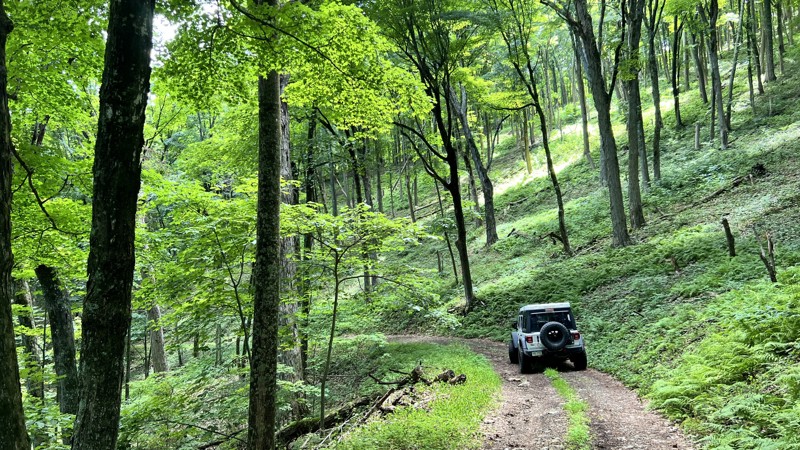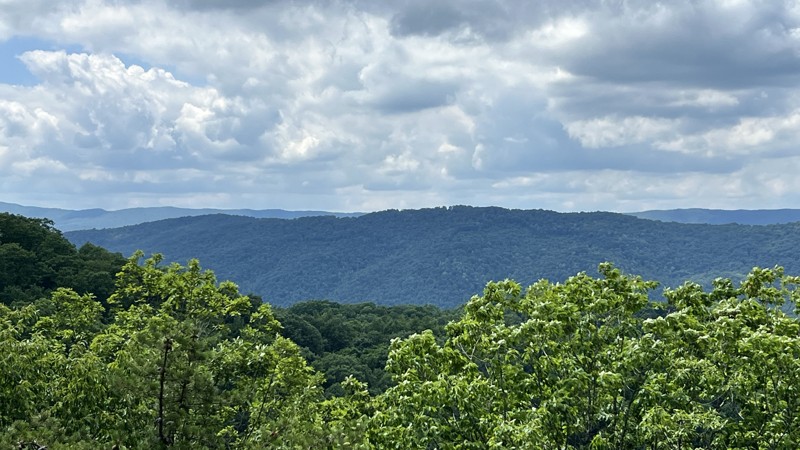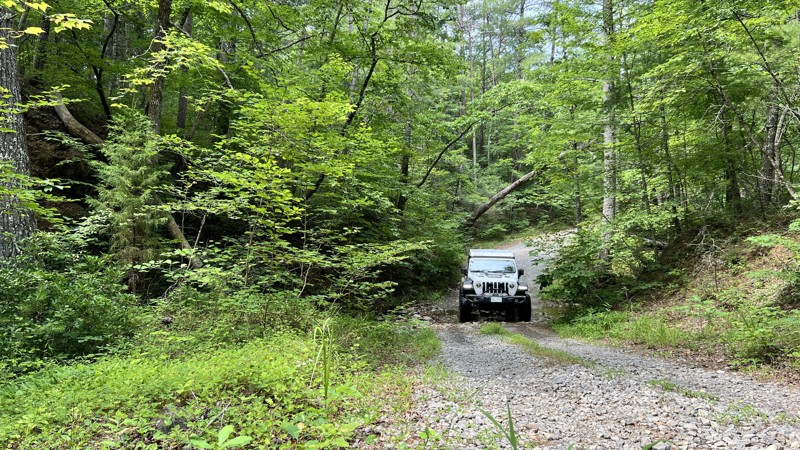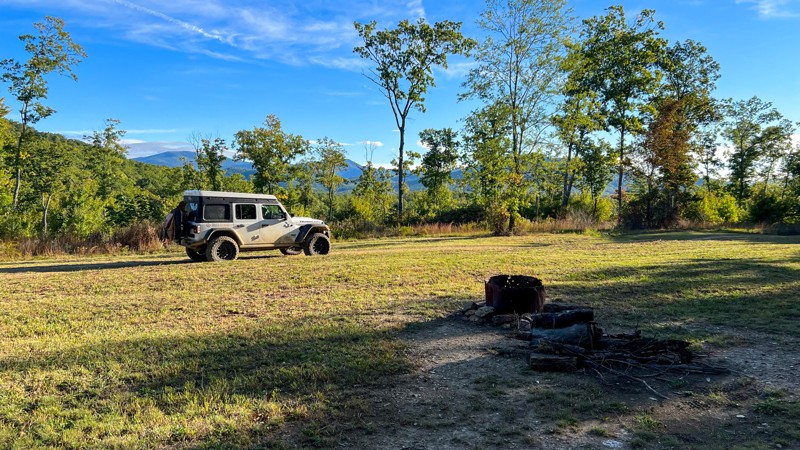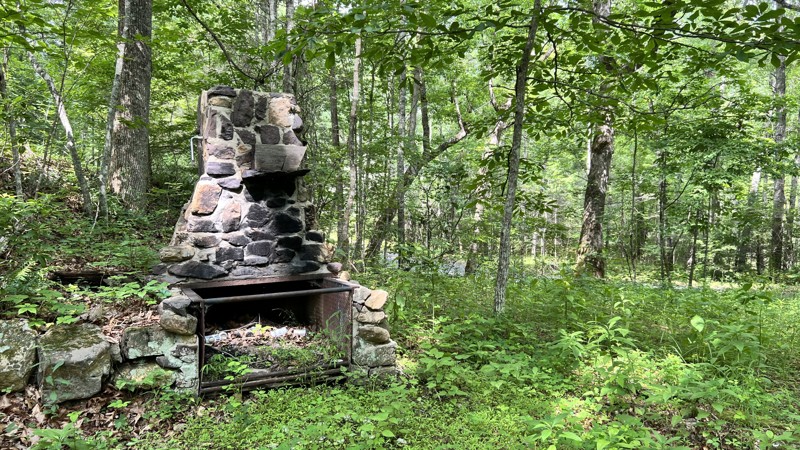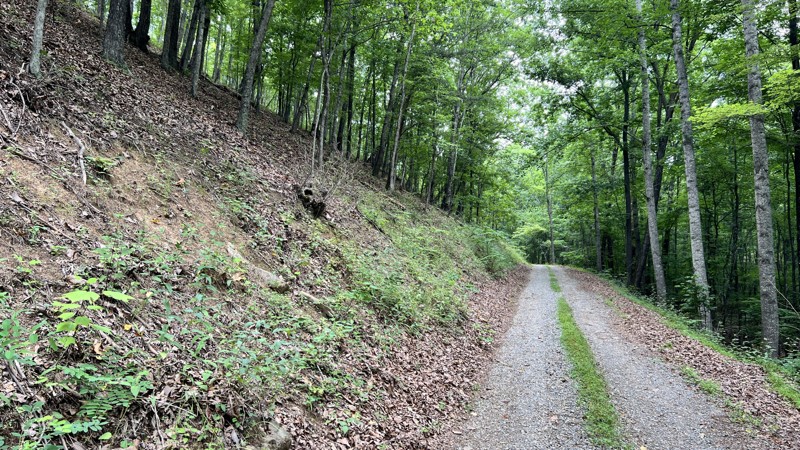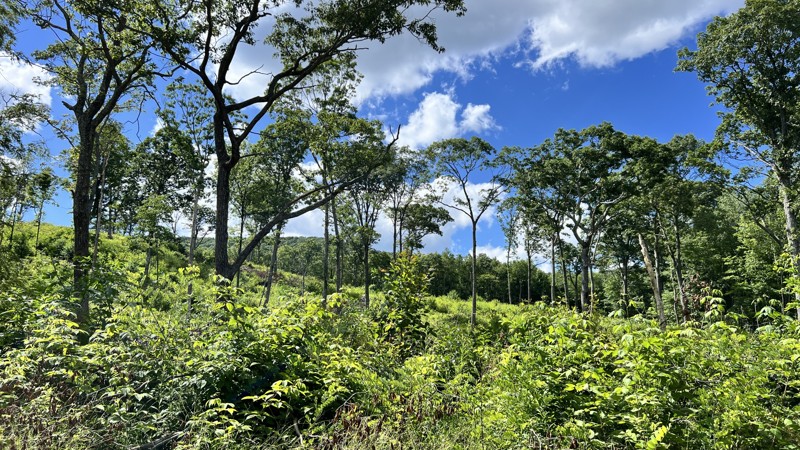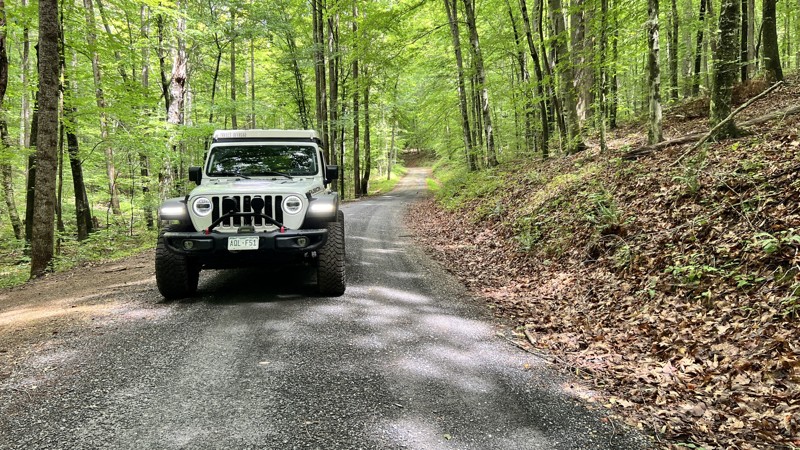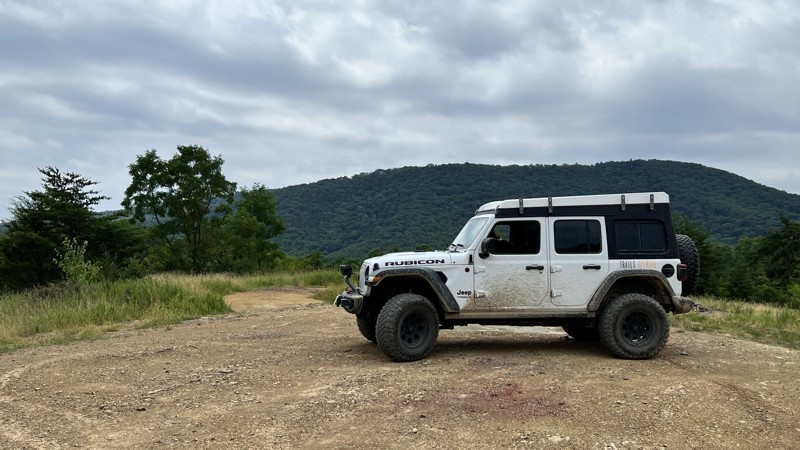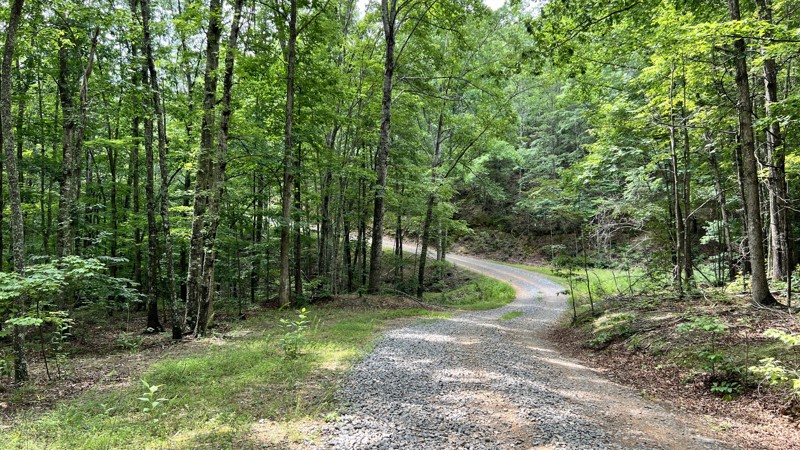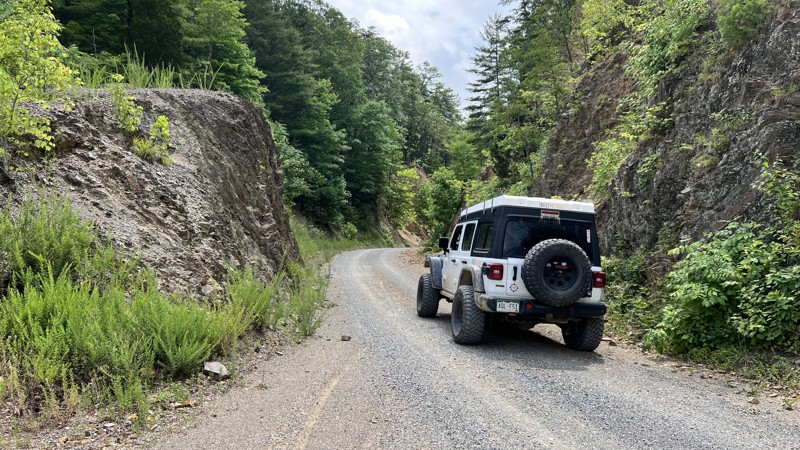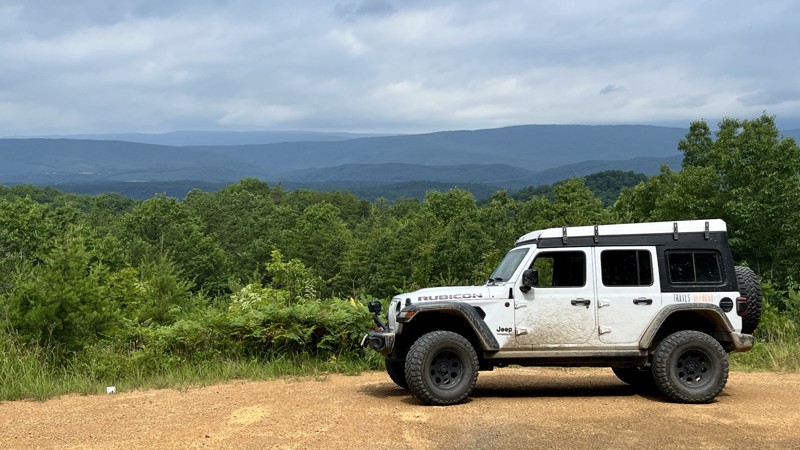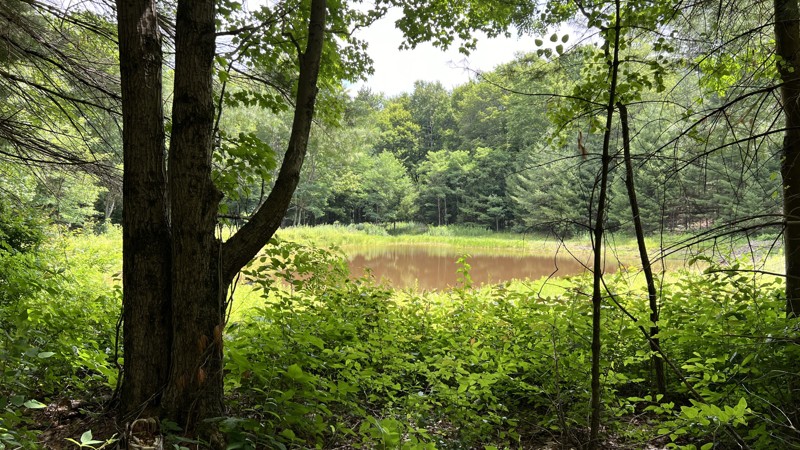Virginia Trails
11
Total Trail Guides6

156
Detailed Waypoints45

Try a Free 7-Day Trial and unlock it all
Most Recent Trail Reviews
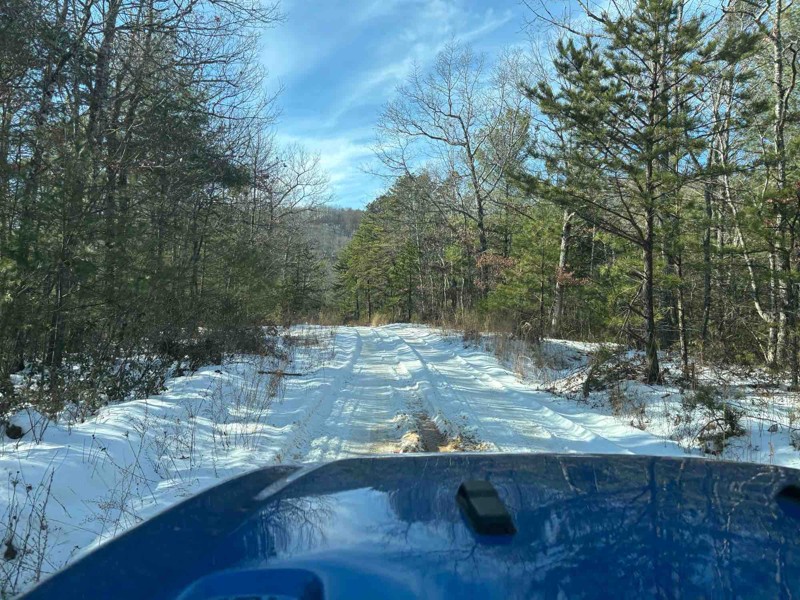

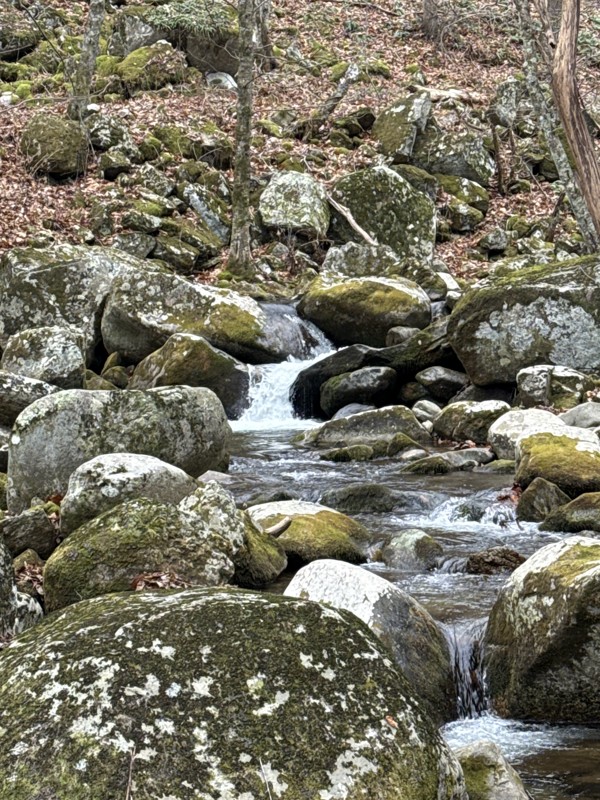
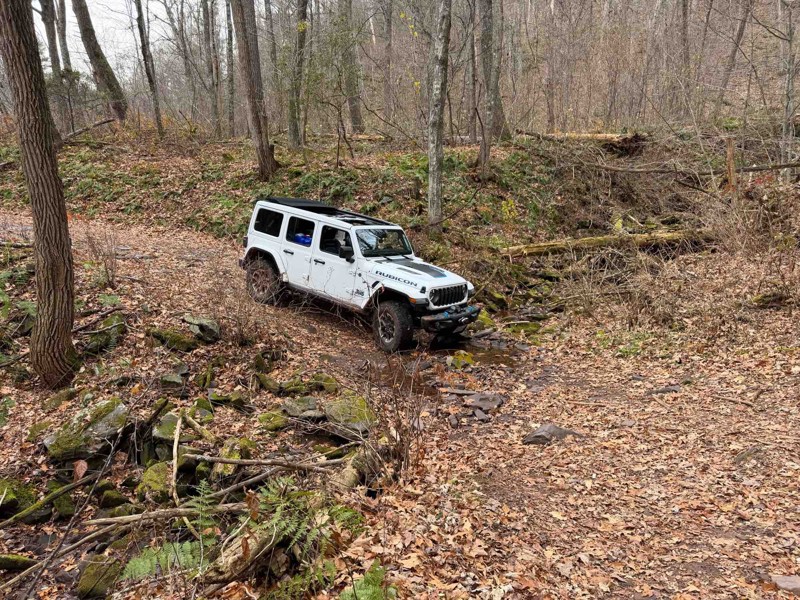
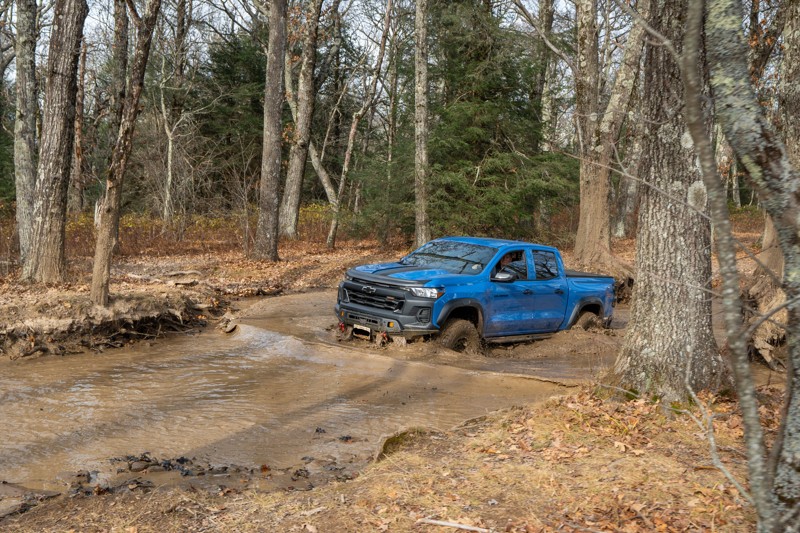





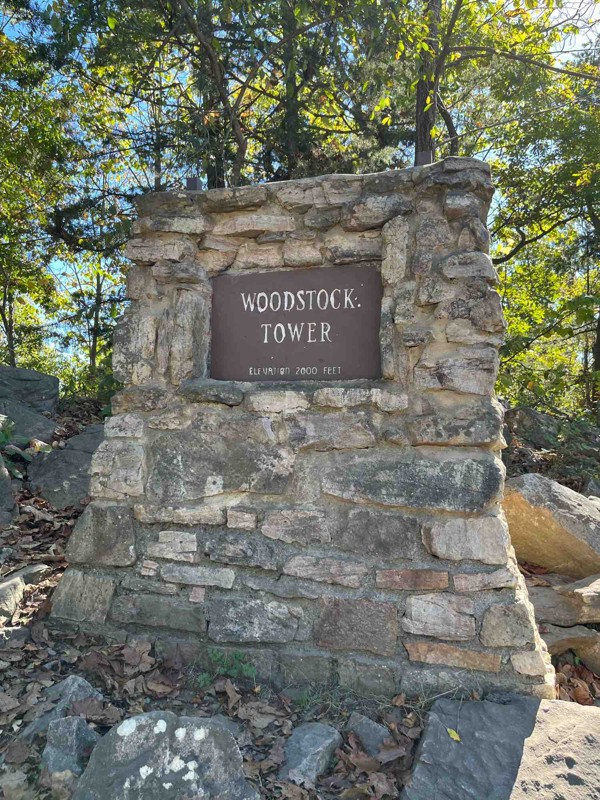
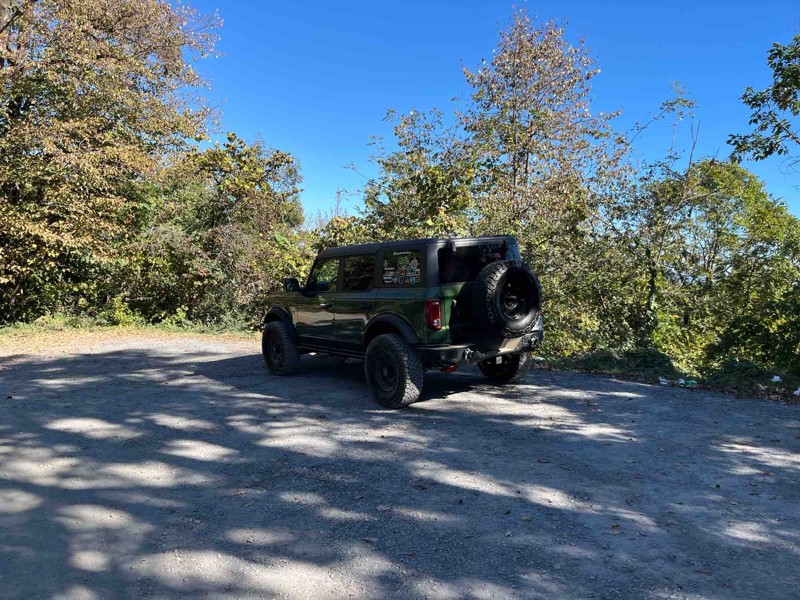
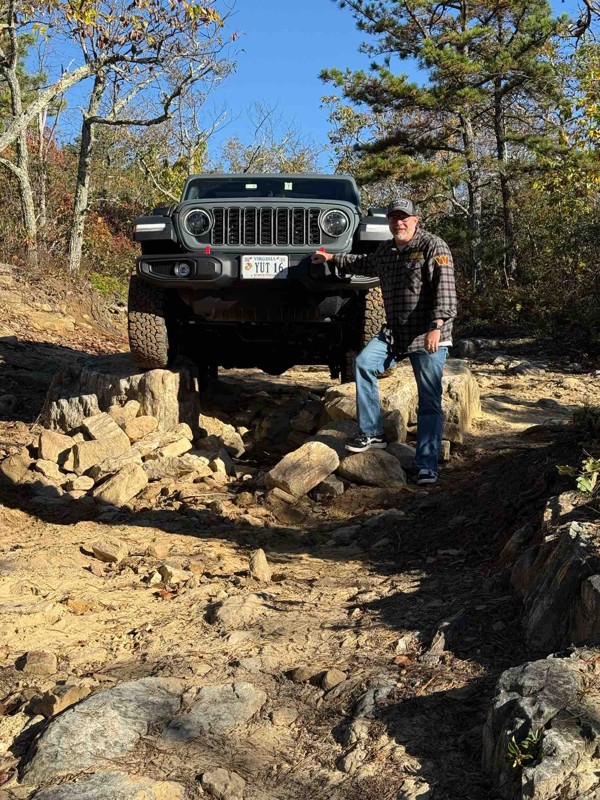
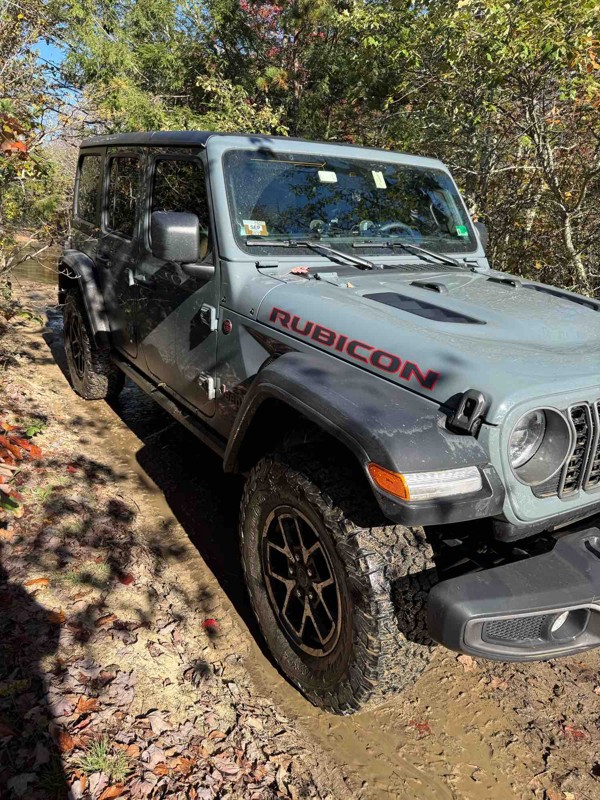
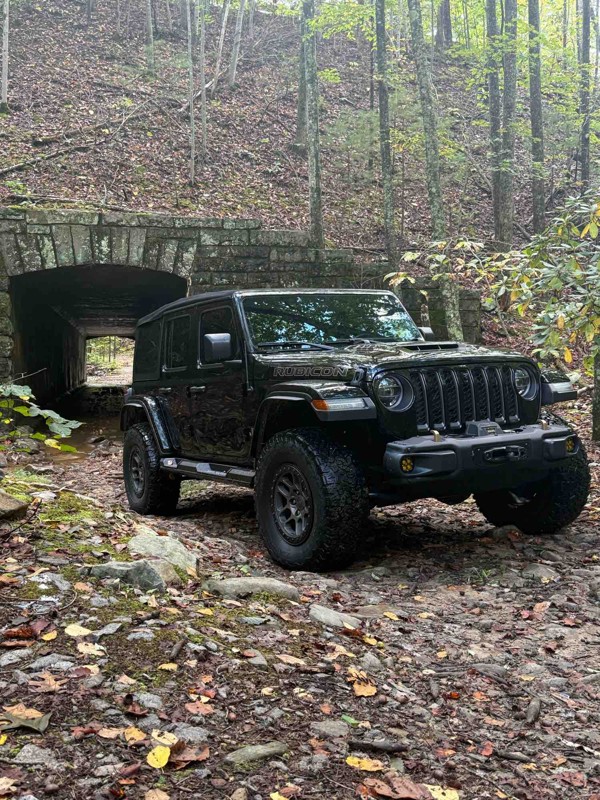
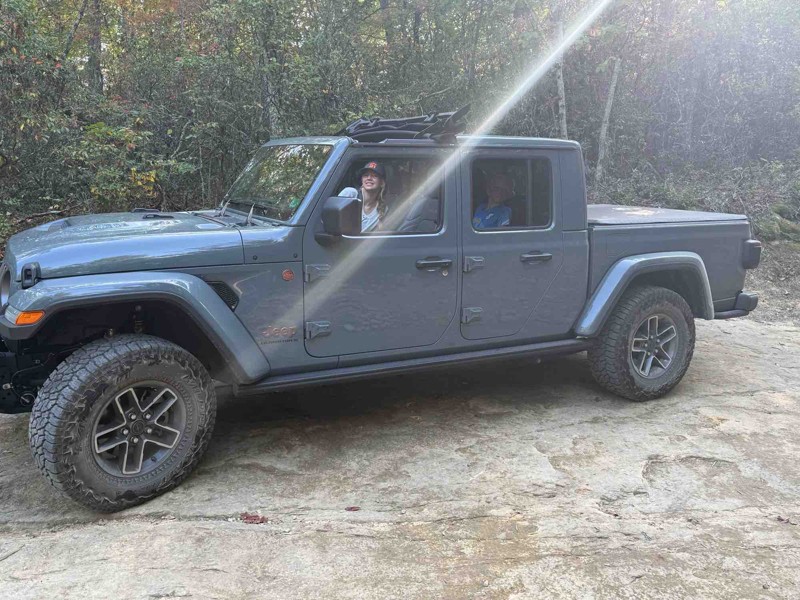
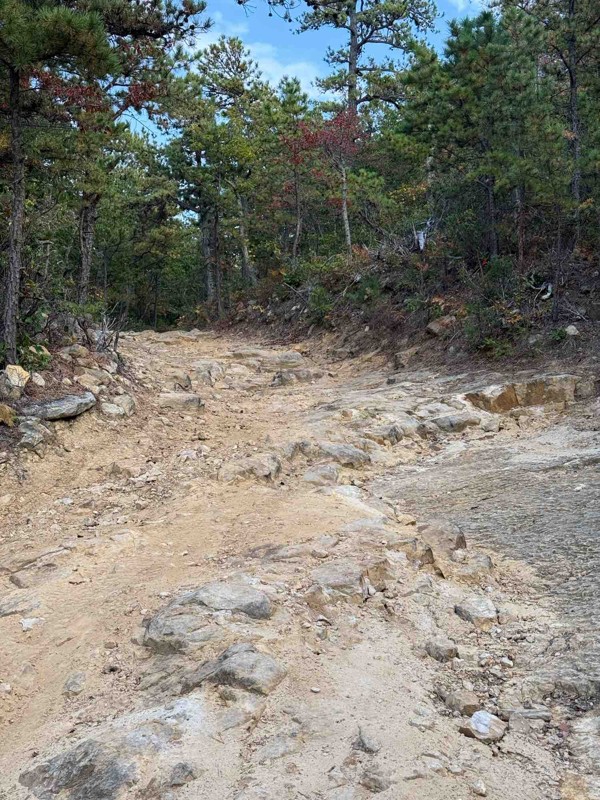

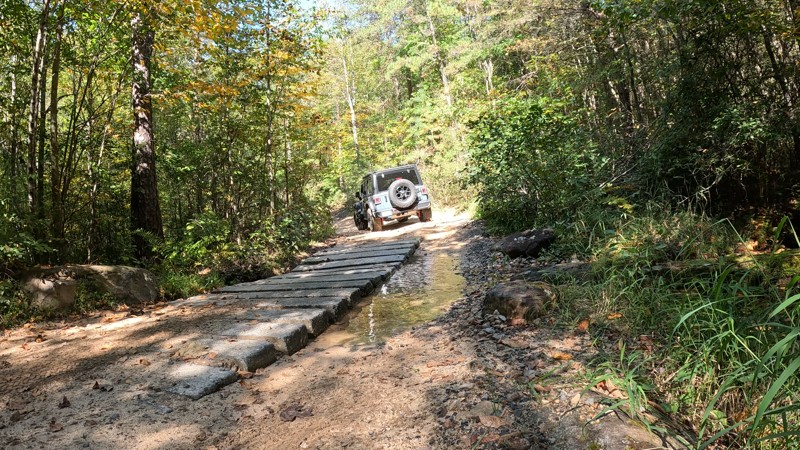
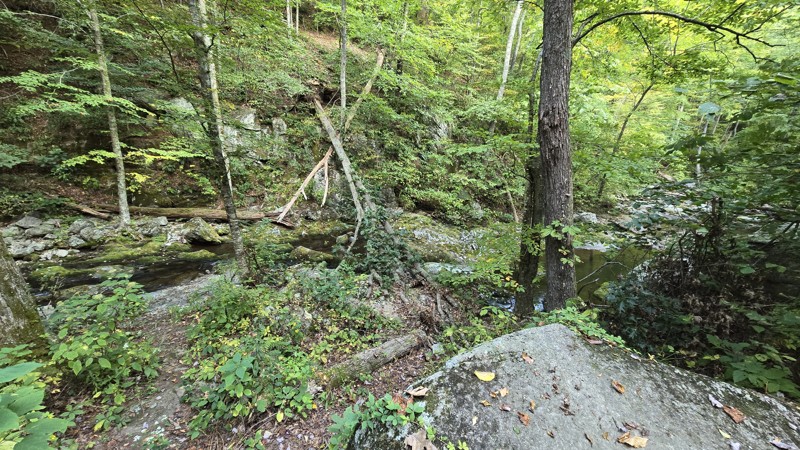
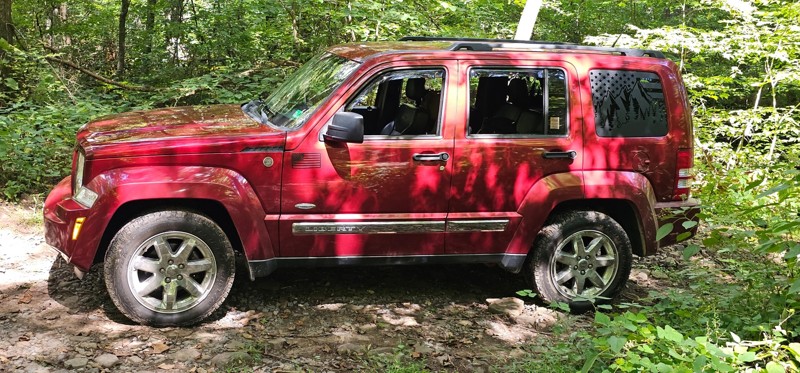
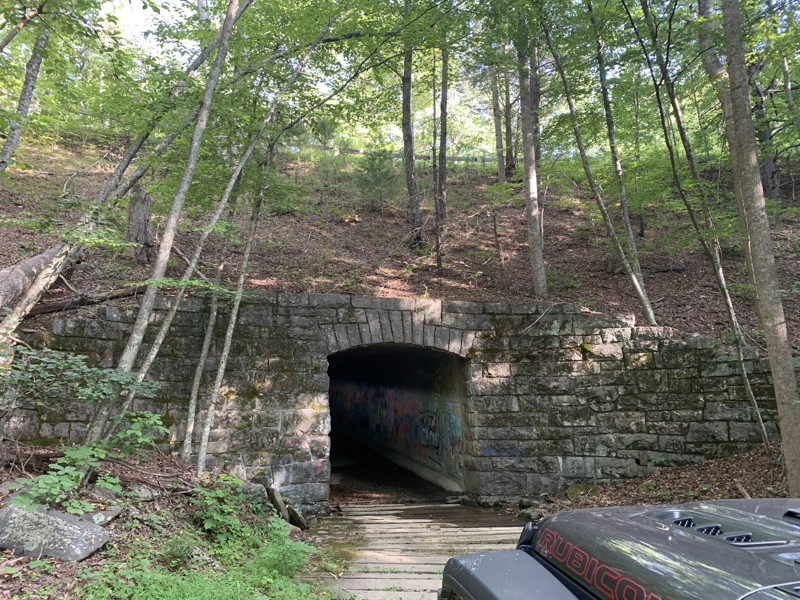
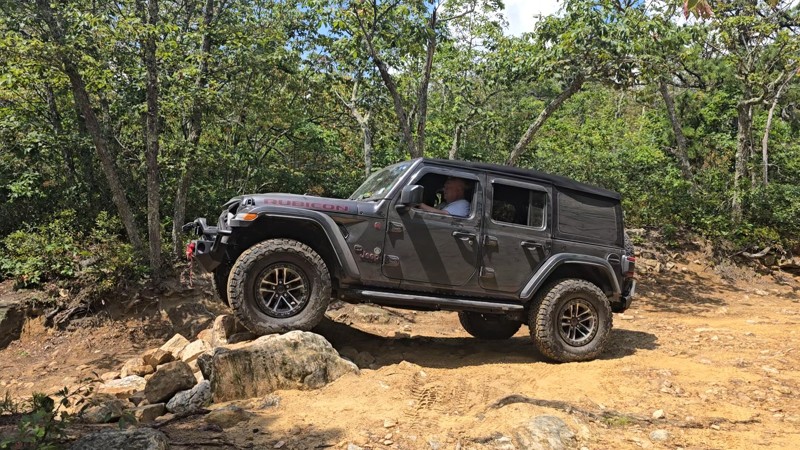
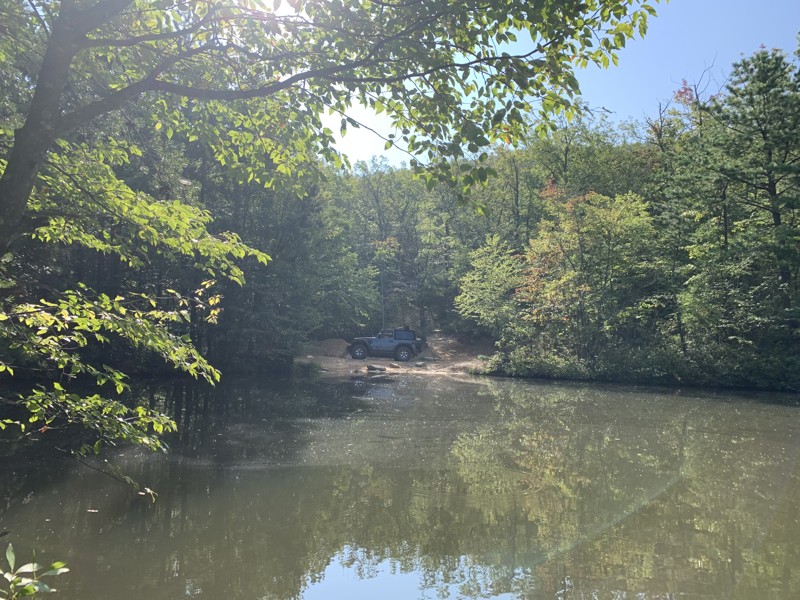
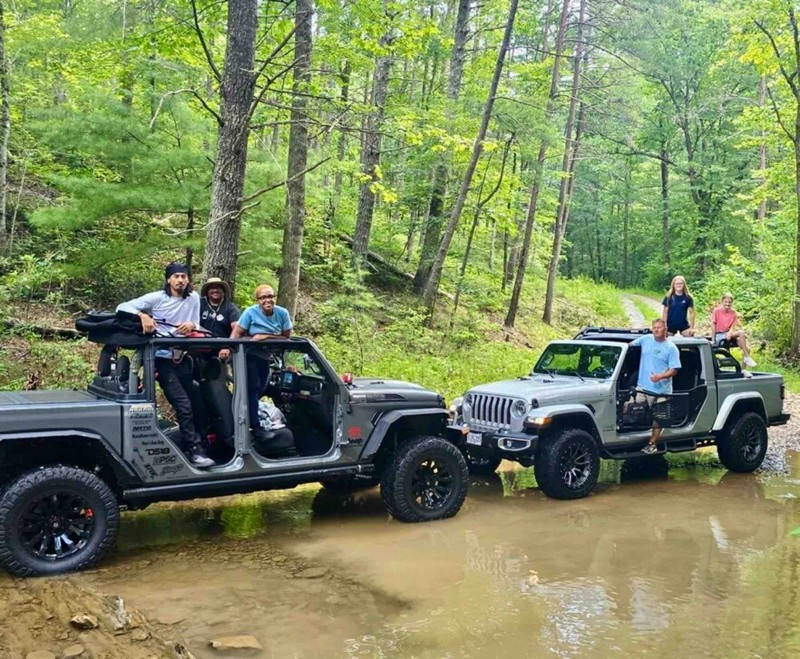
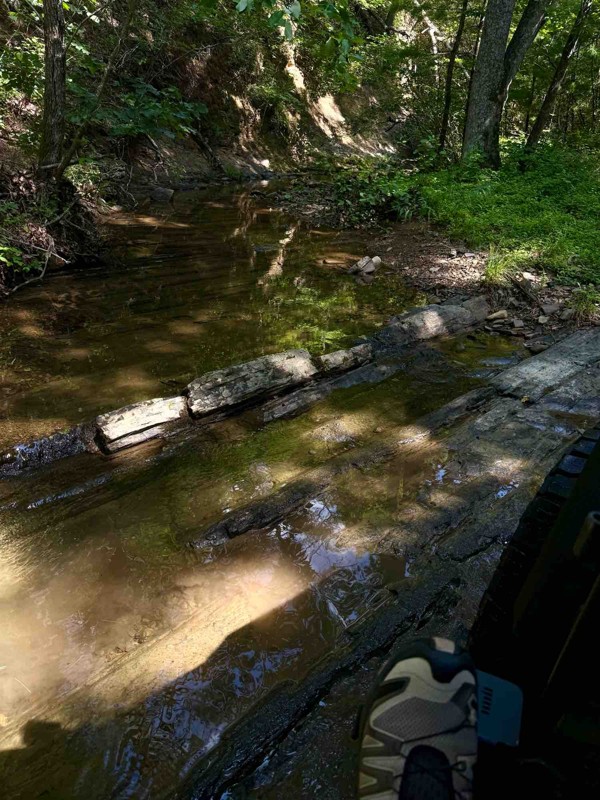


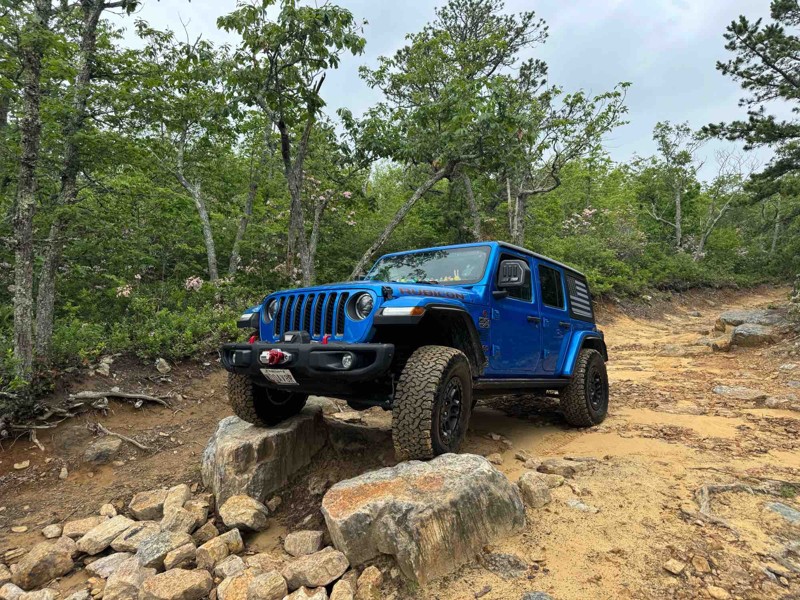
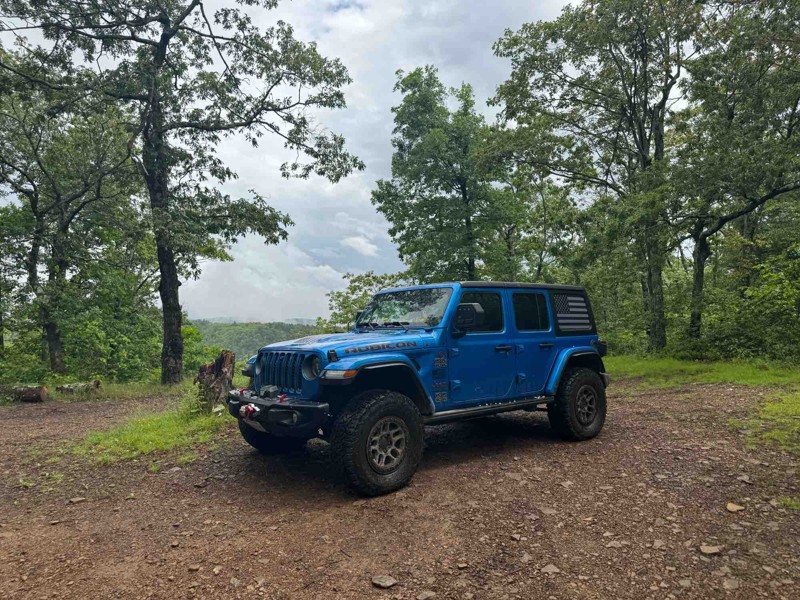
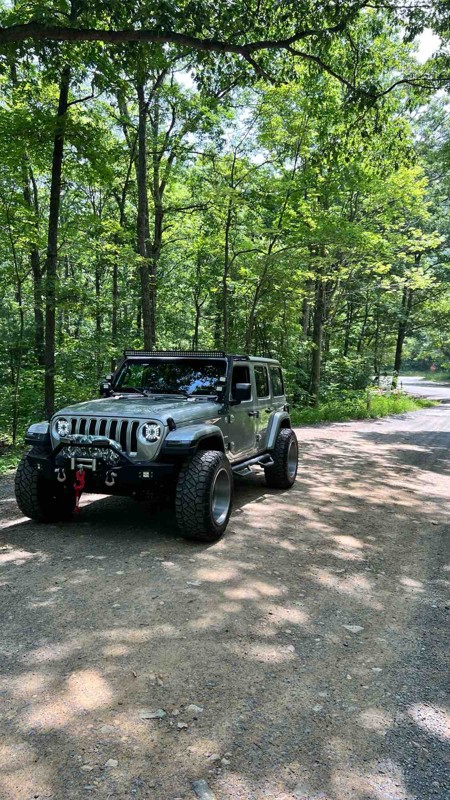
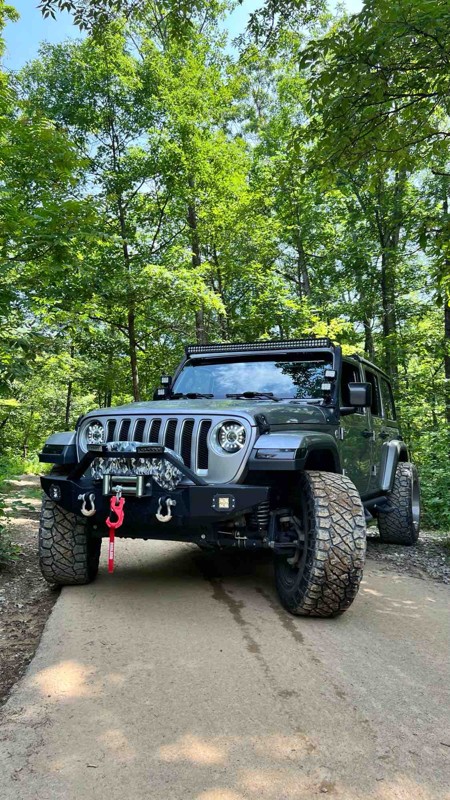
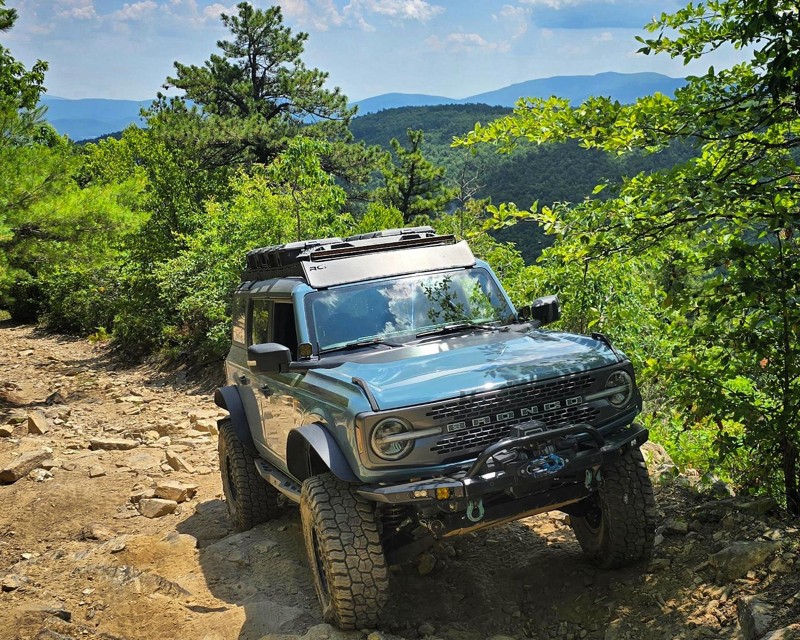
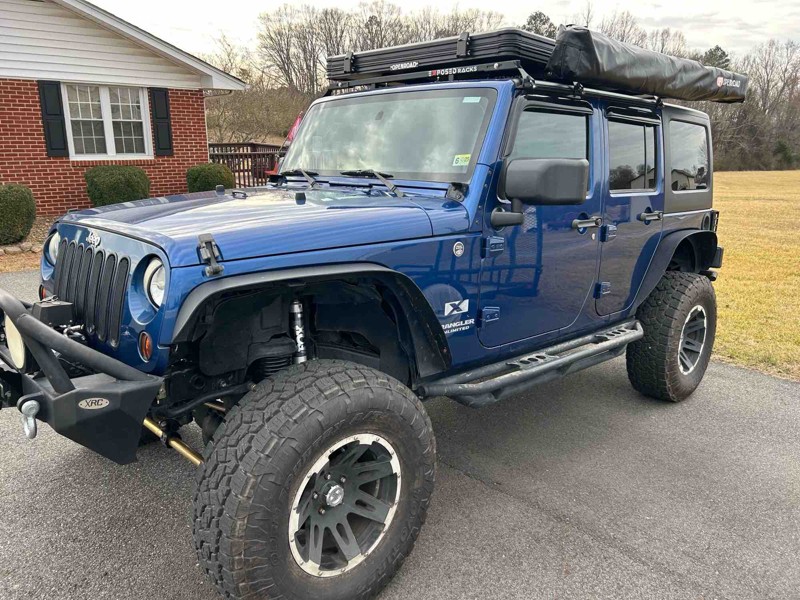
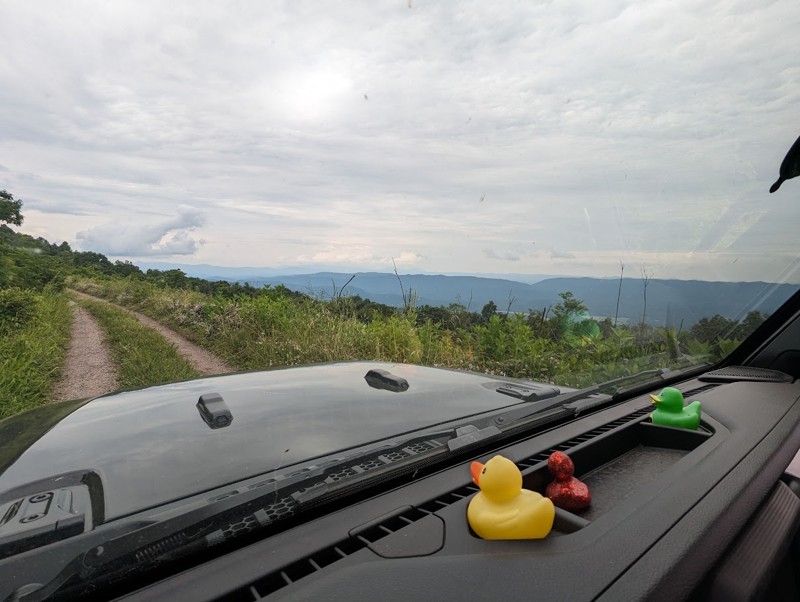

Most Popular
Peters Mill Run
Bald Mountain Jeep Trail aka Big Levels
Nestled in the George Washington National Forest, the Bald Mountain Jeep Trail gives you a great taste of what the Blue Ridge area offers. The George Washington National Forest is highly accessible for your weekend adventures, with major byways allowing you to move around the forest. Regardless of the direction you choose to run the Bald Mountain Jeep Trail, you are in for an adventure with mud pits to spike your adrenaline, rock obstacles to test your line-picking skills, and scenic dispersed camping to chat over the campfire. Take this trail during the autumn, and you'll be treated to the beautiful colors the Appalachians display. Bring a couple of friends to enjoy this as an overnight overland trip!
Flagpole Knob
Skidmore Fork/Dunkle Hollow Road
Potts Mountain Jeep Trail
Most experienced wheelers say Potts Mountain Jeep Trail is the most rugged forest service road east of the Mississippi. Located near the border of Virginia and West Virginia, Potts Mountain Jeep Trail tests your skill set and vehicle build as you climb the tallest mountains in the area. As you conquer this one, you will be greeted with mud pits, severe rock obstacles, epic views of Virginia, and looking further west into West Virginia. Call your buddies because you will need a small team for this one!
Union Springs
Stone Camp
Enchanted Creek
If you own a stock 4WD vehicle with a transfer case and want to get off the main Blue Ridge Parkway to get in time on the dirt, look no further than Enchanted Creek. This trail has a bit of a challenge, amazing stretches of forest, and even a tunnel you will navigate through. There are a few pockets of mud so make sure you have the right tires if you decide to try this one solo.
Long Run Road
Discover the tranquil beauty of the East Coast Appalachian wilderness, where mountains are draped in vibrant, lush trees. At the summit, embrace a timeless solitude, far from the noise and rush of daily life. Epic camping will captivate you, making you never want to leave. The breathtaking views and sense of timelessness are unparalleled. As you gaze across the valleys, imagine Native American hunting parties setting up camp along mountain streams or Civil War soldiers seeking refuge between battles. The trail guides you deeper into the forest, where equally inspiring paths await your exploration.
Pedlar River/Reservoir Road
German River Road
Nestled within the depths of the George Washington National Forest lies a trail winding through a deep, rugged valley, where the sun rises at 10 in the morning and vanishes at 3 in the afternoon. Here, the specter of flash floods looms ever-present, and impassable roads can remain obstructed for weeks. This is the true essence of the Appalachian wilderness, where elusive bobcats and bears keep a watchful eye, demanding your utmost vigilance. Not for the faint-hearted, but you'll never feel more alive!
Coal Road
Broad Run
Reddish Knob
Forest Road 374
Old Mans Run Forest Road
A short drive from Harrisonburg, the North River Ranger District of the George Washington National Forest offers a veritable maze of trails for the offroad enthusiast. Old Mans Run Forest is very much a trail in two parts. You start with a long, open climb of 1200 feet with splendid views across the mountains and valleys. Then, the forest closes in on you with a tranquil atmosphere that encapsulates the soul as you inhale the earthy scent of pine needles. The peace is only disturbed by the gentle sounds of a mountain stream's tranquil melody. Don't miss the mossy streamside campsite at the end of the trail.
Parkers Gap
Coon Bridge
Coon Bridge is the roughest trail in this immediate area. Near its start from Indian Creek Road, it is on a right-of-way easement through private property, and landowners have placed signs asking for respect for the property; the road slightly veers from the MVUM through this section. It starts rough and steep. Once it leaves the private property, an erosion v-notch obstacle must be straddled. Most of the trail is tight, overgrown, rocky, and slightly offcamber. Aggressive stock high-clearance vehicles with 4low can accomplish the trail in dry conditions. The views are limited during foliage months, and dispersed camping cannot be found. Look to Big Piney for good camping and as your return road to the valley.
Tub Run
County Road 758
North River
Hunting Creek
West Side Road
West Side Road is the epitome of an Appalachian Mountain back road. It's a place where the distinct laughter of pileated woodpeckers reverberates throughout the forest, and where the eerie hum of ghostly moonshiners' V8 engines blends with the whispers of the wind. The fragrance of sweet-scented mountain laurel fills the senses, adding to the atmosphere of intrigue.
Locals still caution against venturing onto these dirt roads, lest you disturb the clandestine activities of moonshiners hidden deep in the holla. Each bend holds the promise of encountering new characters—will you cross paths with trucks brimming with hunting dogs, and what quarry are they pursuing? Turkeys, bears, or perhaps even unsuspecting city dwellers?
Amidst the mystery, the silhouette of a dark figure in the shadows catches your eye, prompting questions and stirring the imagination. And as you lay your head down to catch some sleep, you can't help but wonder—was that the faint strum of a banjo echoing from the depths of the mountains?
Bald Mountain
Not to be confused with the Bald Mountain Jeep Trail, This Bald Mountain is located northwest of Roanoke, traveling straight through from the paved Peaceful Valley Road to the Forest Road Lignite Mines. The road starts steep and narrow and is comprised of degraded pavement, gravel, dirt, and rock at the beginning. Users should anticipate protruding rocks, shallow water/mud holes, and tight brush pinstriping through the remainder of the trail. Once at the high points, views open up to the east, and at its highest point resides a clearing for unparalleled views to the west. Any aggressive high clearance vehicle with four low gearing can manage the road under normal conditions.
Wildlife
Peaceful Valley East
Hone Quarry
Potts Mountain Road
Big Piney
Big Piney is a well-maintained gravel road that follows alongside the Childress Branch and South Fork Piney River. From where it crosses the Appalachian Trail, the eastern portion of the road is scenic as it follows the moss-covered waterways. This section includes roughly ten dispersed campsites, well spread out in the distance and each sizeable for two vehicles and two tents.
Vepco Road
Vepco Road is a well-packed gravel road that provides quick access to Long Run Road. Driving up Vepco Forest Road and down the east side of Long Run Road is an easy way to view the majesty of this section of the George Washinton National Forest without needing a four-wheel drive vehicle. As long as you don't mind powerlines, the views are spectacular.
Dolly Anne
Stretching nearly 20 miles from the town of Covington, Dolly Anne travels through the George Washington National Forest and is part of one of the longer backcountry discovery routes. Towards the middle, the route briefly shares the paved Sulphur Springs Road, but it is gravel with no obstacles for almost all of it. There are several campsites scattered throughout the length of the trail.
Battery Creek
Mud Lick
Sweet Springs Turnpike
Calf Pasture
Crabtree Meadows
Crabtree Meadows, also called Crabtree Falls, leads to the hiking trailhead parking lot for Crabtree Falls and joins the partially open Shoe Creek trail. At the parking lot, there is a vault toilet. The hike to the fall is 2.9 miles one-way. The road is entirely maintained gravel except where runoff occurs, where larger golf-ball to baseball-sized rocks can be present. With foliage, the views are minimal, but the trail does have five well-hidden campsites from the road, with a few more directly roadside that you can walk into. It is suitable for any high-clearance vehicle.
Peaceful Valley West
Hog Camp
Hog camp is a wide gravel road that crosses the Appalachian Trail and connects to several other roads in the area. With foliage, the views are limited. When traveling west to east, the road turns from a wide, well-maintained gravel road to a narrower, rougher road shortly after it crosses the AT, but it is still suitable for any high clearance vehicle. The short spur, FR 51, leads to additional hiking routes. Over its span, there are only a few dispersed campsites.
Shoe Creek North
A sign at the start of the trail informs visitors that Shoe Creek is being evaluated for closure to protect headwater trout water, unique habitats, adjacent Wilderness character, the Appalachian Scenic Trail, and newly found Federally Endangered Species. The Forest Service's own maps depict the road traveling straight through and much further. However, a gate makes this a short out-and-back trail. It does cross the Appalachian Trail and has one campsite. The road is rough with ledges and basketball-sized rocks, requiring clearance and four-wheel drive.
Limekiln
Limekiln is a straight-through, mild gravel road that is suitable for any high-clearance vehicle. There is plenty of clear-cutting evidence that does provide for views as you drive it. There is also evidence of either prescribed burns or forest fires. There is one small dispersed campsite.
Cow Camp
Cow Camp starts at a picnic table area at the Lexington Turnpike and is directly next to the Appalachian Trail. The road can be traveled in either direction, but traveling uphill is preferred. The road is rougher than its neighboring trails, starting as hardpacked native soil mixed with rocks and getting rockier and more eroded as you climb in elevation. It is mostly one vehicle width wide with little passing. Anticipate pinstriping. While the road is non-technical, drivers may wish to use four-wheel drive with low gearing on the steeper grades. No dispersed camping is found along the trail.
Sugar Tree
Sugar Tree is an exceptionally wide road compared to other roads in the area. The width provides a nice break through the trees to view the mountain range you are driving in. There are no obstacles, and the road is suitable for any high-clearance vehicle. While there are a few dispersed camping sites, most are directly on the side of the road, providing little privacy.
Patterson Creek
Patterson Creek is a gravel road running alongside its namesake. It has roughly a dozen well-spaced dispersed campsites large enough for a few vehicles each. The road is entirely under a tree canopy and provides cooler temperatures in the summer. There are several creek crossings, mostly under one foot in depth, and a hard bottom during dry weather, but they can be much deeper during heavy rain events.
Lovelady
Limestone Hill and Rocky Gap
Piney Mountain
At the northern end, an old stone chimney greets you at the start of the trail. The road winds its way along the lower portions of Big Piney Mountain, Black Rock, and Middle Knob. It is mostly gravel, and the rocks can become baseball to softball-sized, where it crosses any runoff. The road is suitable for any high-clearance vehicle. It dead ends at private property, but you can take Hester on its southern end to return to the pavement. A handful of dispersed camping sites can be found along the trail, and they are large enough to accommodate one to two vehicles.
Kelly Hollow
Kelly Hollow is a quick out-and-back jaunt that leads to a dead end. At the beginning, there is a parking setup where bicyclists and hikers can use the road. Drive with care and share the road. There is one minor creek crossing at which one dispersed campsite exists.
Greasy Springs
Greasy Springs is an out-and-back trail that crosses the Appalachian Trail and ends at a clearing. Most of the road is hard-packed gravel, with a few spots of protruding rock. It is suitable for any high-clearance vehicle. A limited number of predisturbed campsites exist on the route but are very difficult to find.
Jordan
Jordan connects the Blue Ridge Parkway and Pedler River Road. It is a gentle drive, with the road being primarily maintained gravel suitable for any vehicle and typically wide enough for passing when encountering other drivers. There are limited dispersed camping opportunities, but at the eastern end, it joins FR 76A and the Oronco Campground. The campground has a vault toilet and a half dozen spaces for tents and shorter motorhomes.
Leading Ridge
Leading Ridge connects North River to the Todd Lake Recreation Area. It is an opportunity to extend your offroad adventure by a few miles. Towards the middle of the trail, a clearing gives views of the surrounding mountains. There are three sizeable dispersed camping sites along the route.
Oi
Oi is a mild gravel road that continues or merges with Patterson Creek and can be used when overlanding the area's various forest service roads. It is suitable for any street-legal vehicle and is entirely maintained. Unlike Patterson Creek, no camping is found along the road. It can offer forested views during the summer and, in a few locations, views beyond the trail when the trees are bare.
Craig Valley Drive
When combining Oi and Patterson Creek, Craig Valley Drive provides Northern access in or out of the forest. It has hardly any views of Craig Creek and appears to have been once a railroad grade. Certain maps show the road on the west continuing across the creek, but it does not. Be mindful that it is almost entirely on private land, and there is no camping off this road. It is suitable for any street-legal vehicle.
Rocky Mountain FAA
This is a simple graded gravel road to a radio-type tower. There are no obstacles, but steep grades may dictate four-low gearing. There are no camping opportunities along the trail.
Hebron
Hebron is a gravel out-and-back road suitable for any street-legal vehicle. It leads to an overlook where you can see the valley that Craig Creek resides in, along with all the mountains in the background. Camping is non-existent.
Hester
Hester is a short gravel road that connects Piney Mountain to the paved Dry Run Road. There is no camping, and the road is suitable for any vehicle.
Puffenbarger Pond
This is a short out-and-back trail that leads to a pond and one campsite. The road is rutted and eroded and could be impassable in wet weather due to mud. The campsite at the end appears that it could also be very soggy during wet weather, although it is sizeable for several vehicles.

Upgrade your Membership
Unlock all of the details on every Trail Guide and Scout Route.
Start a 7-day Free Trial

